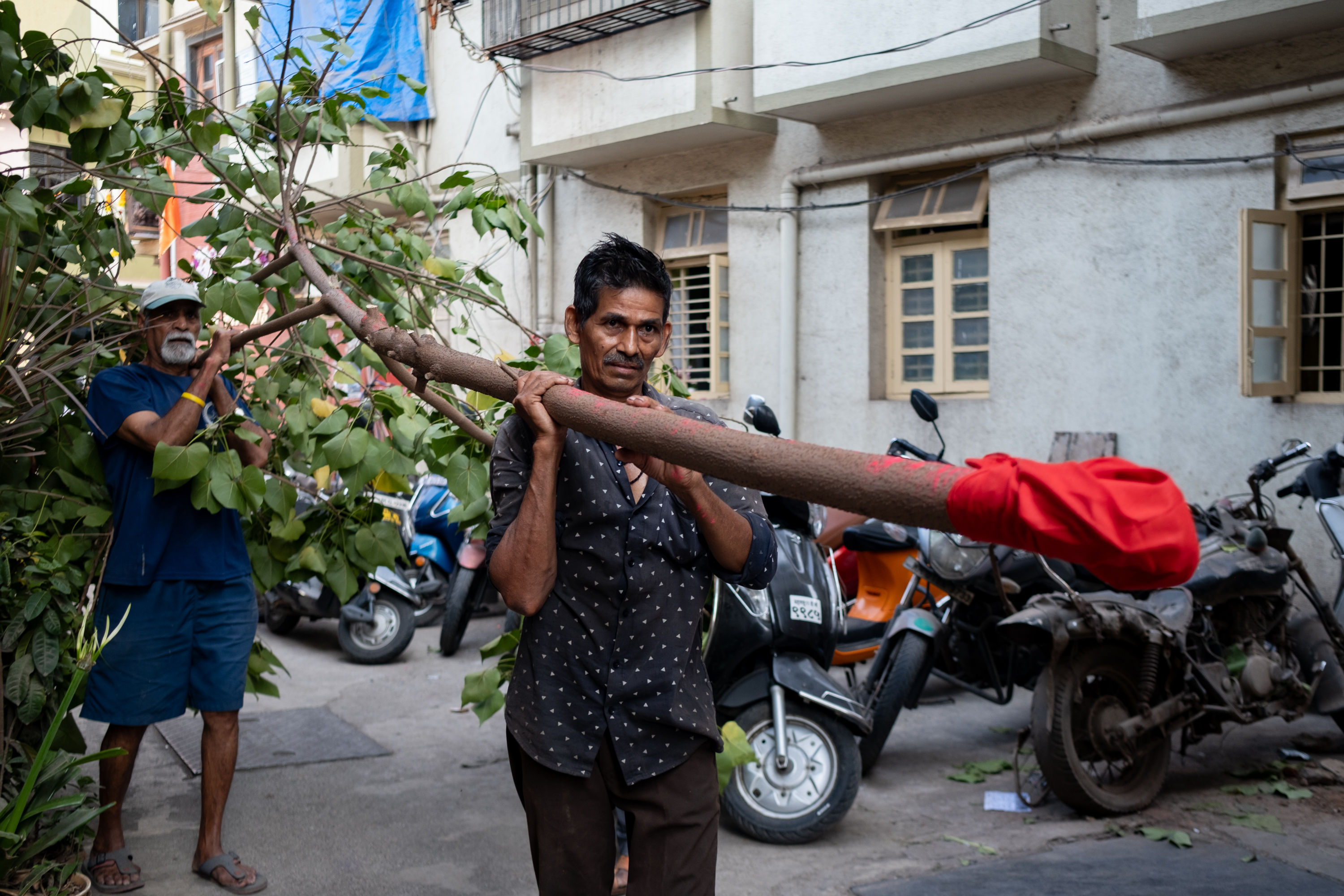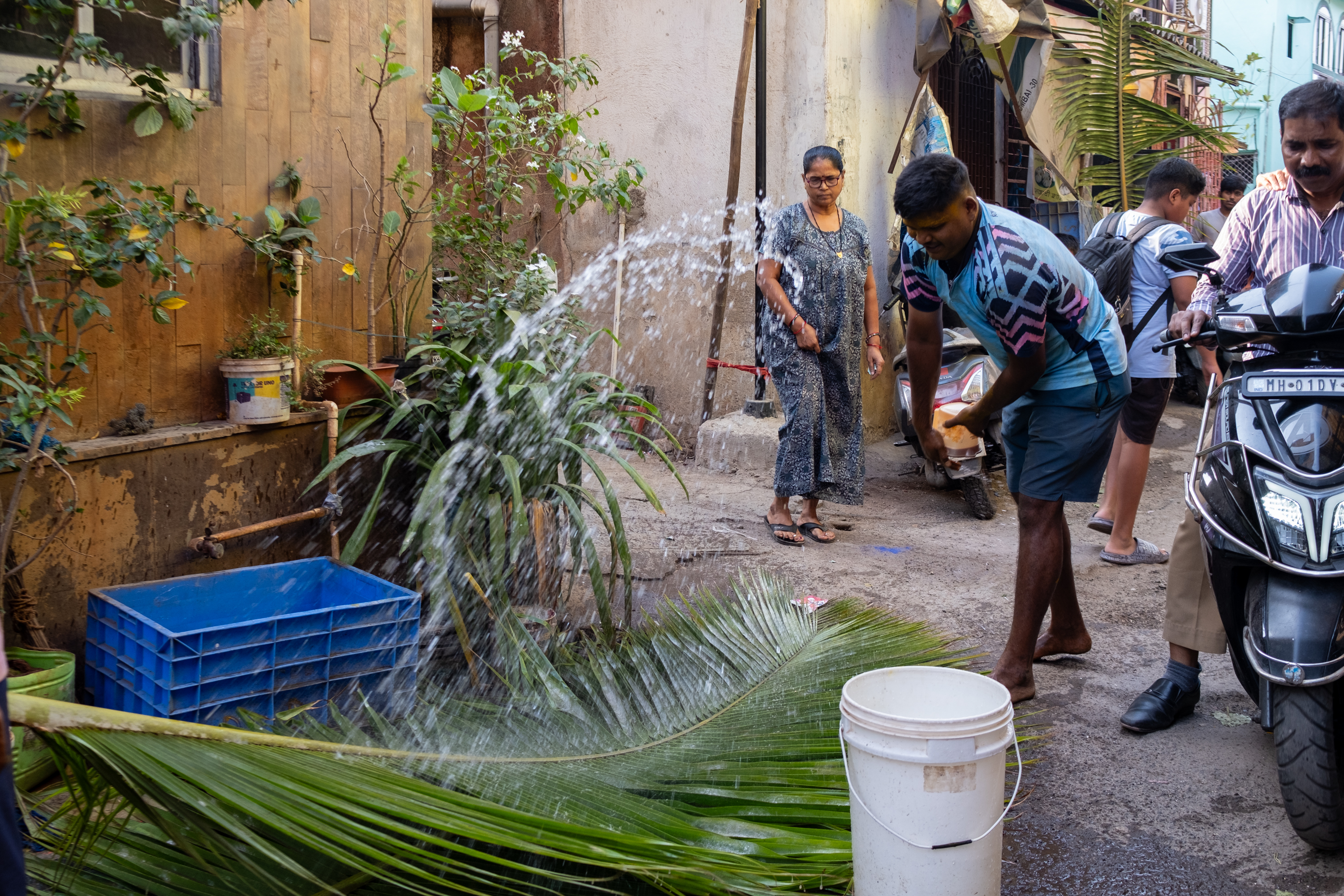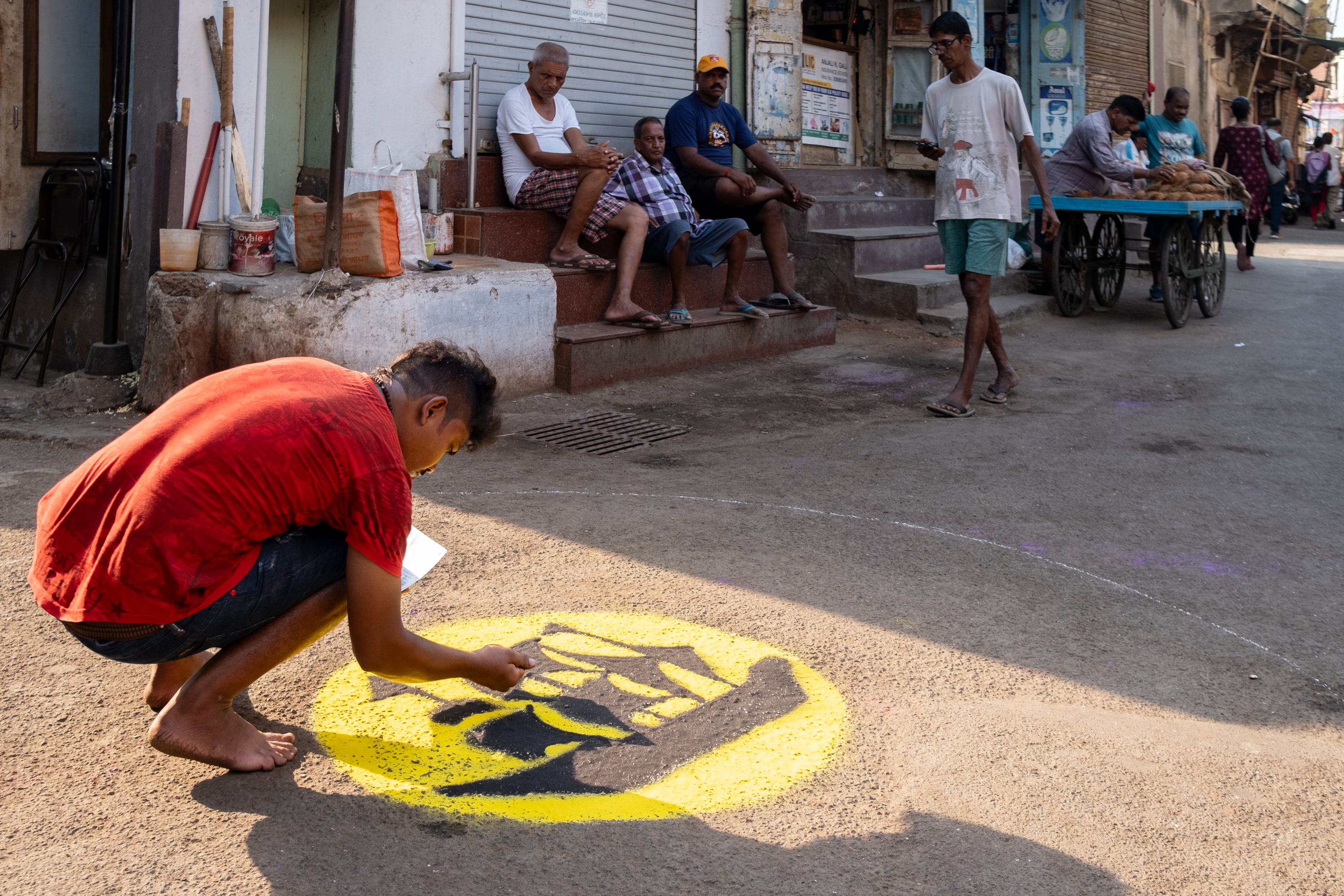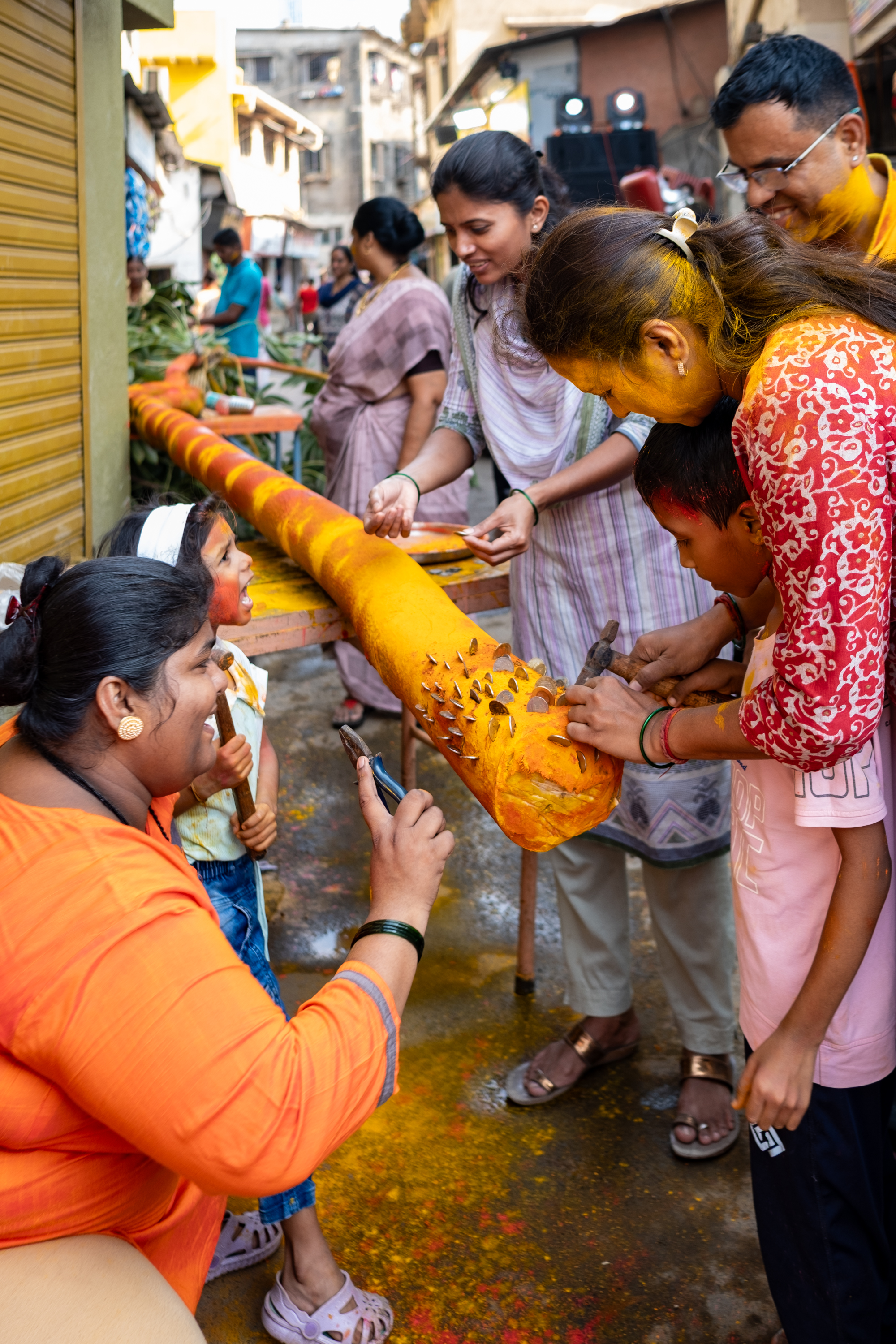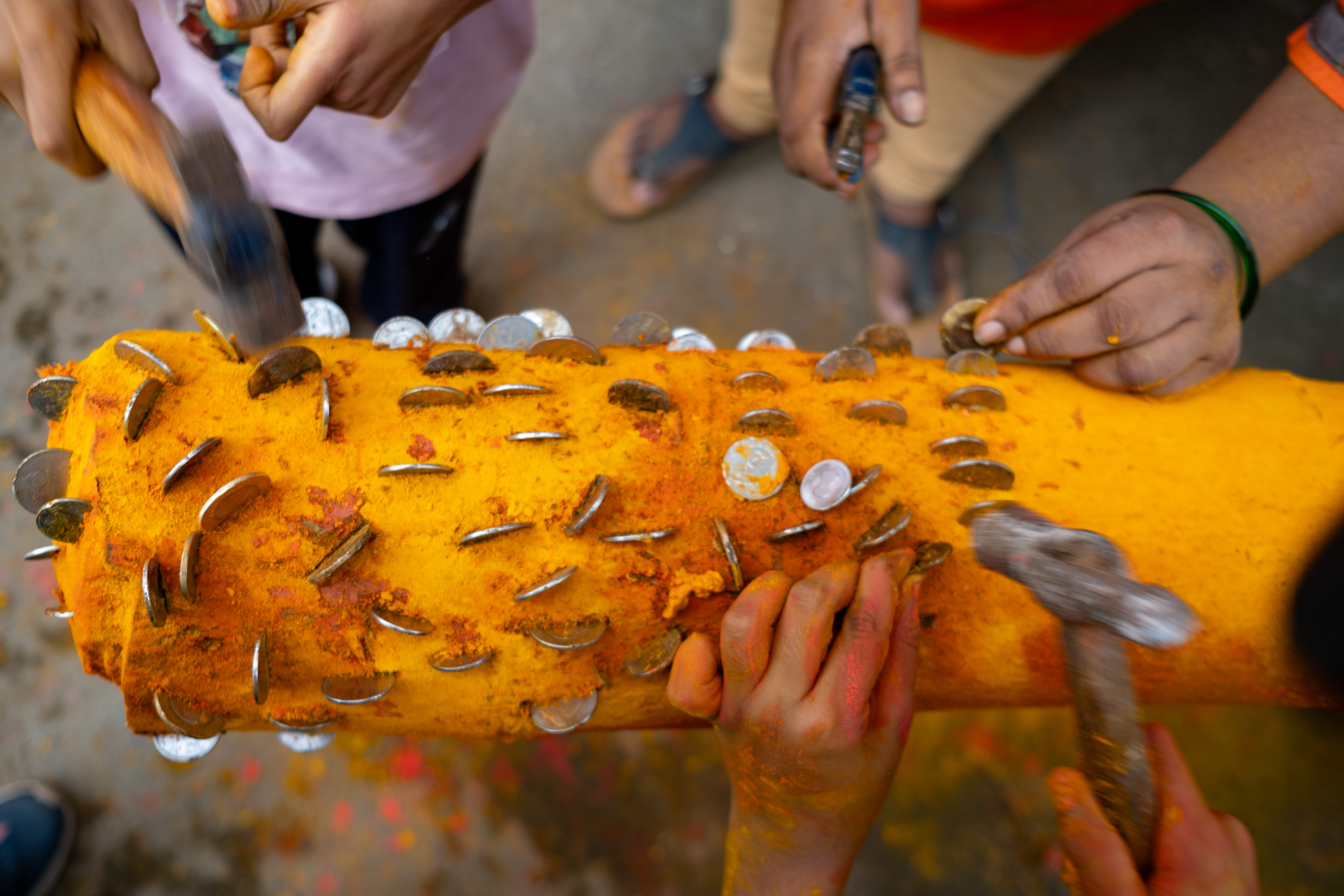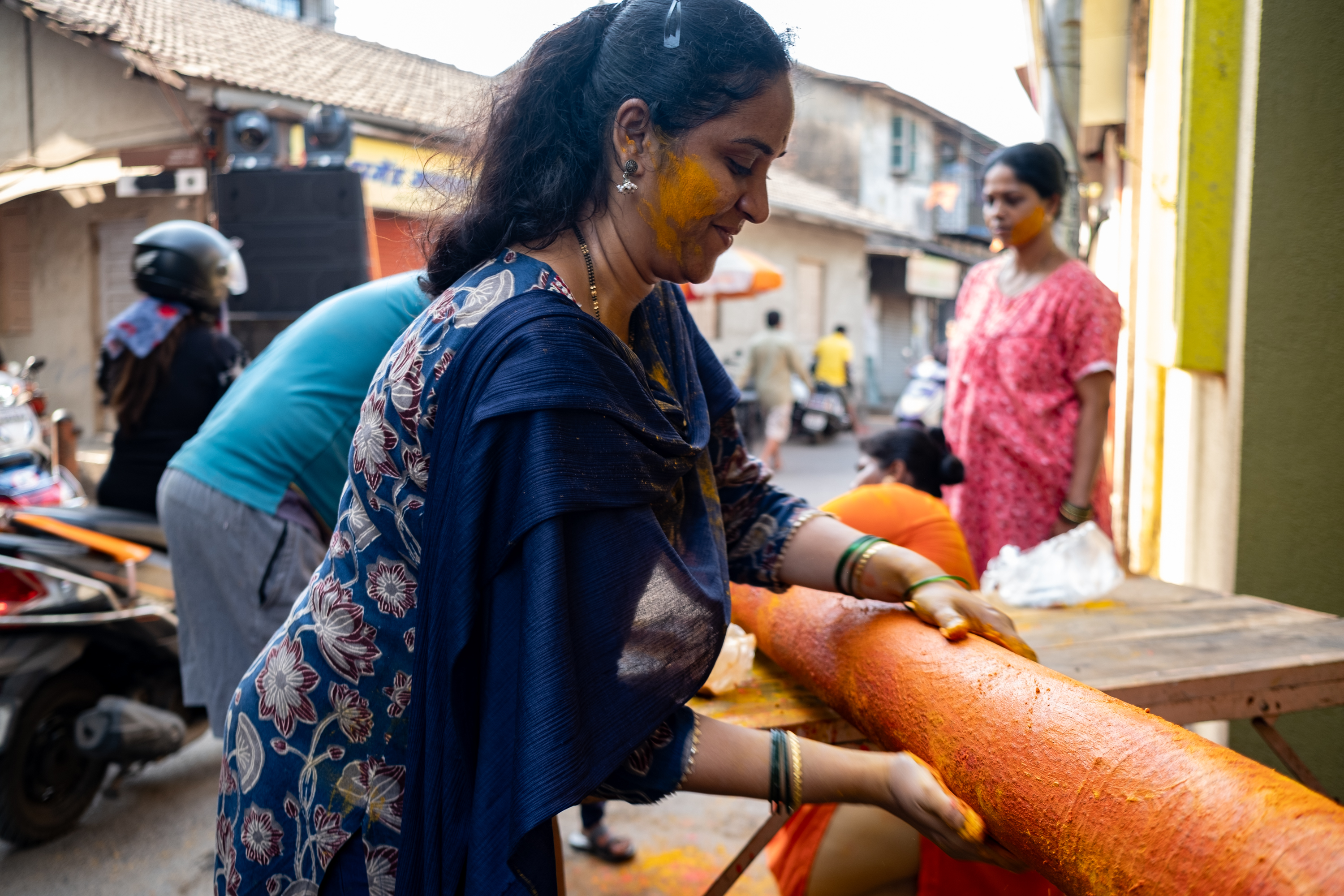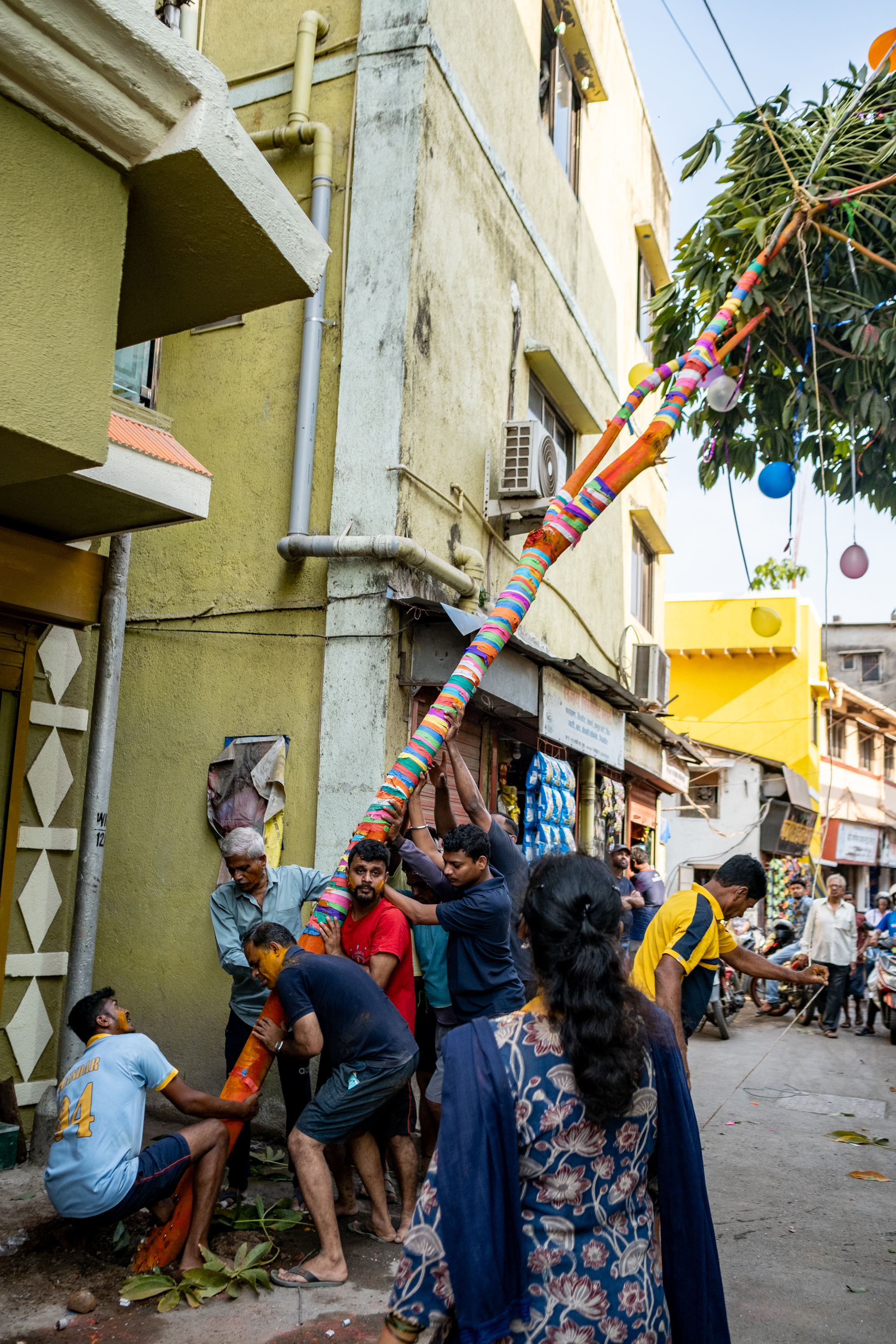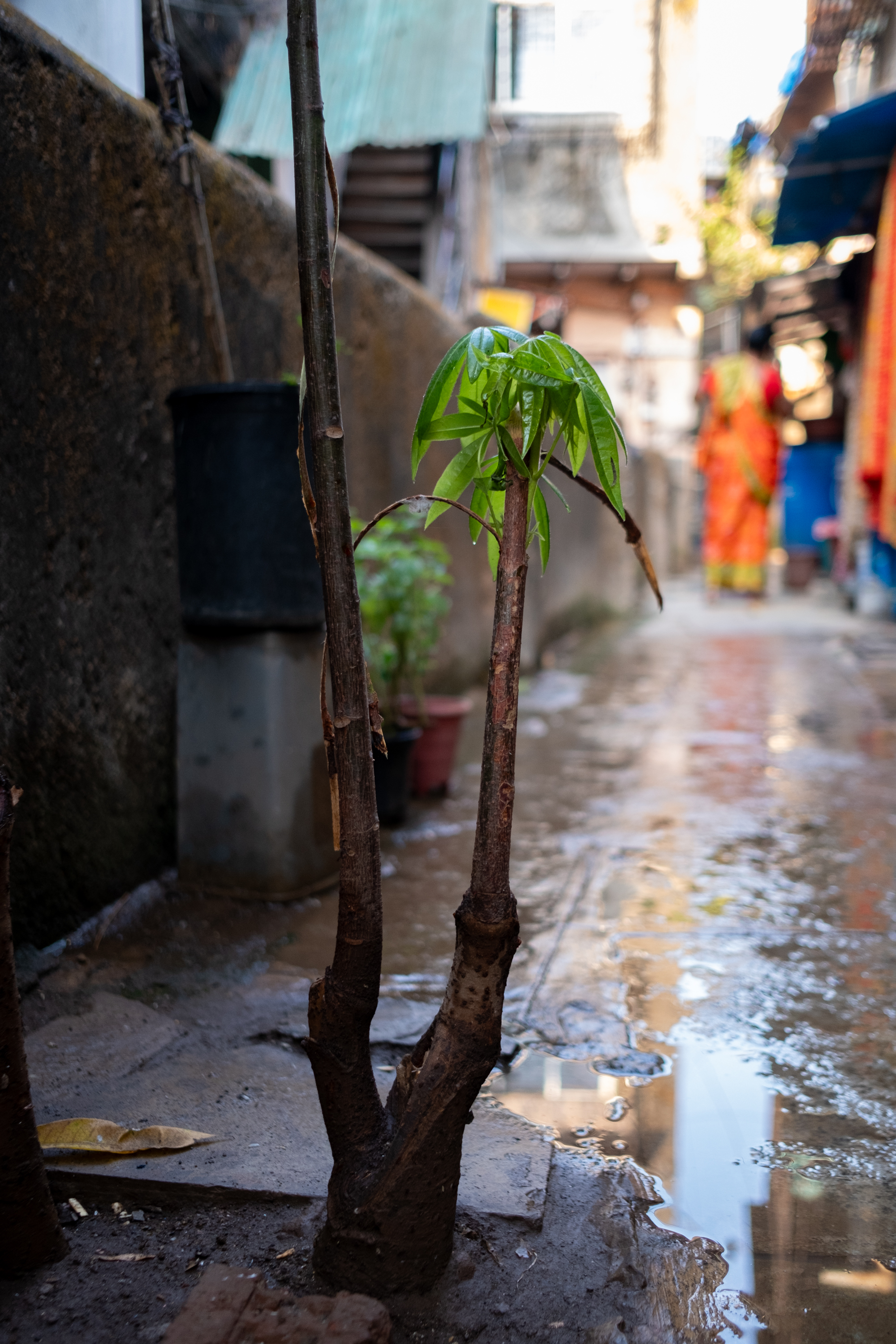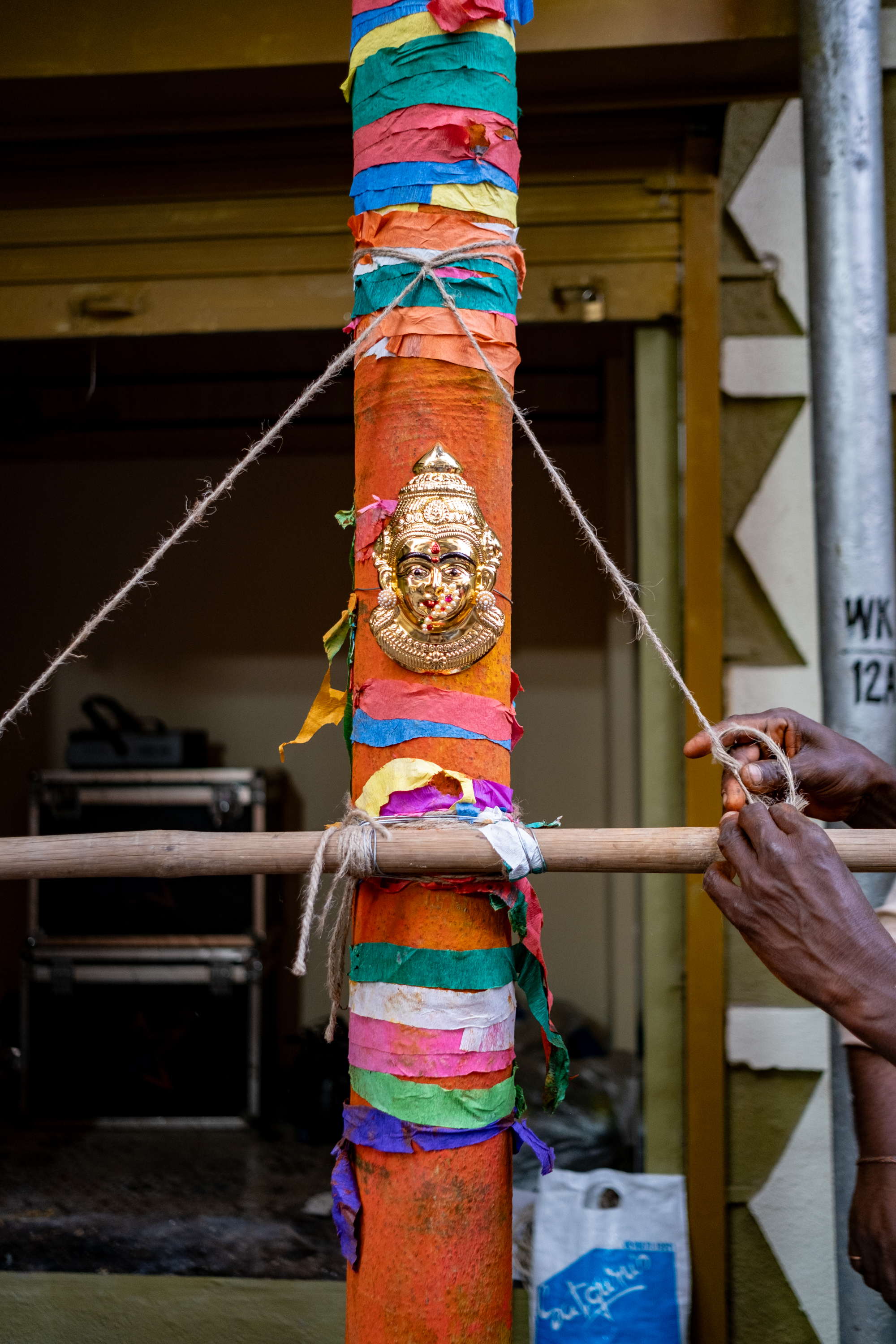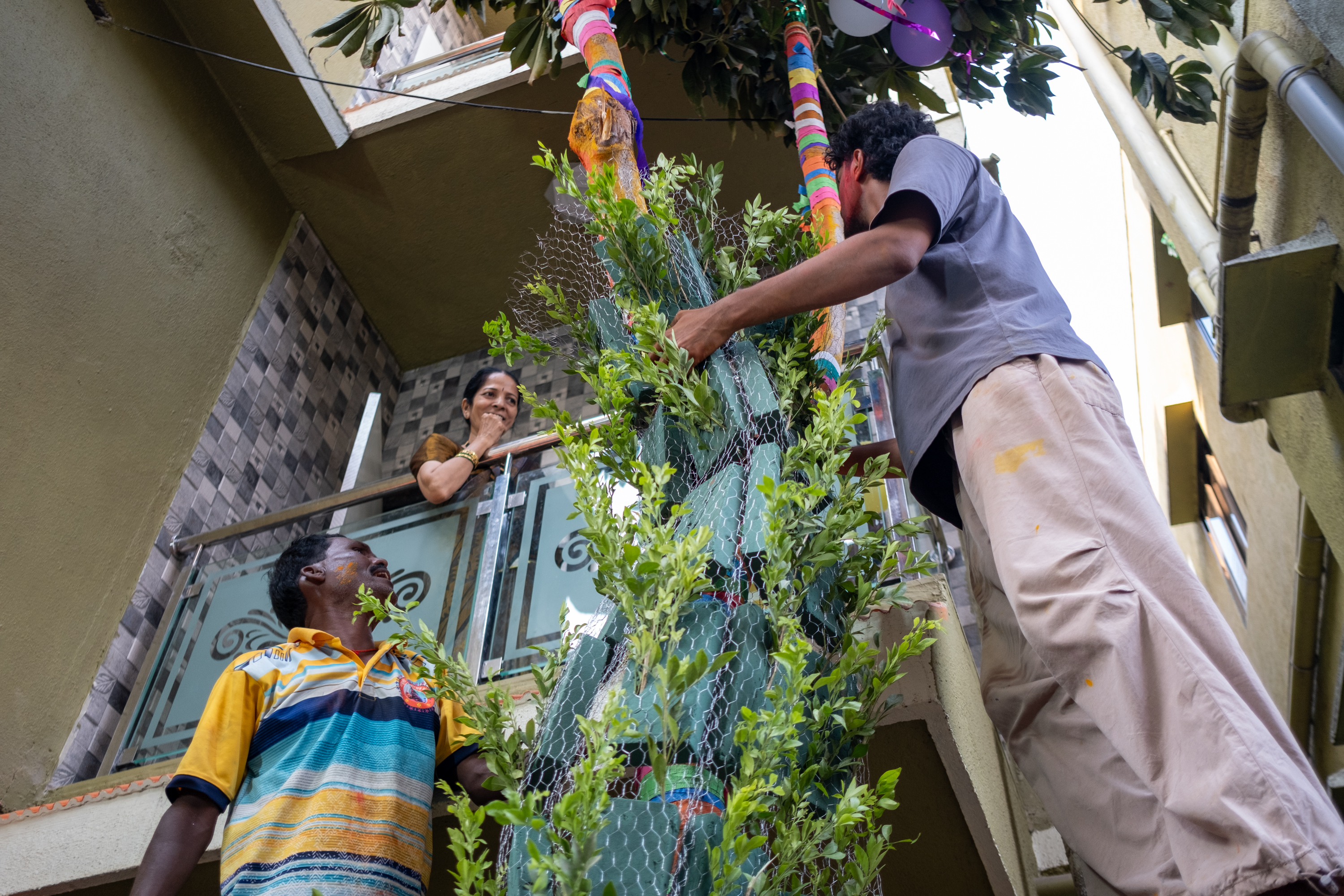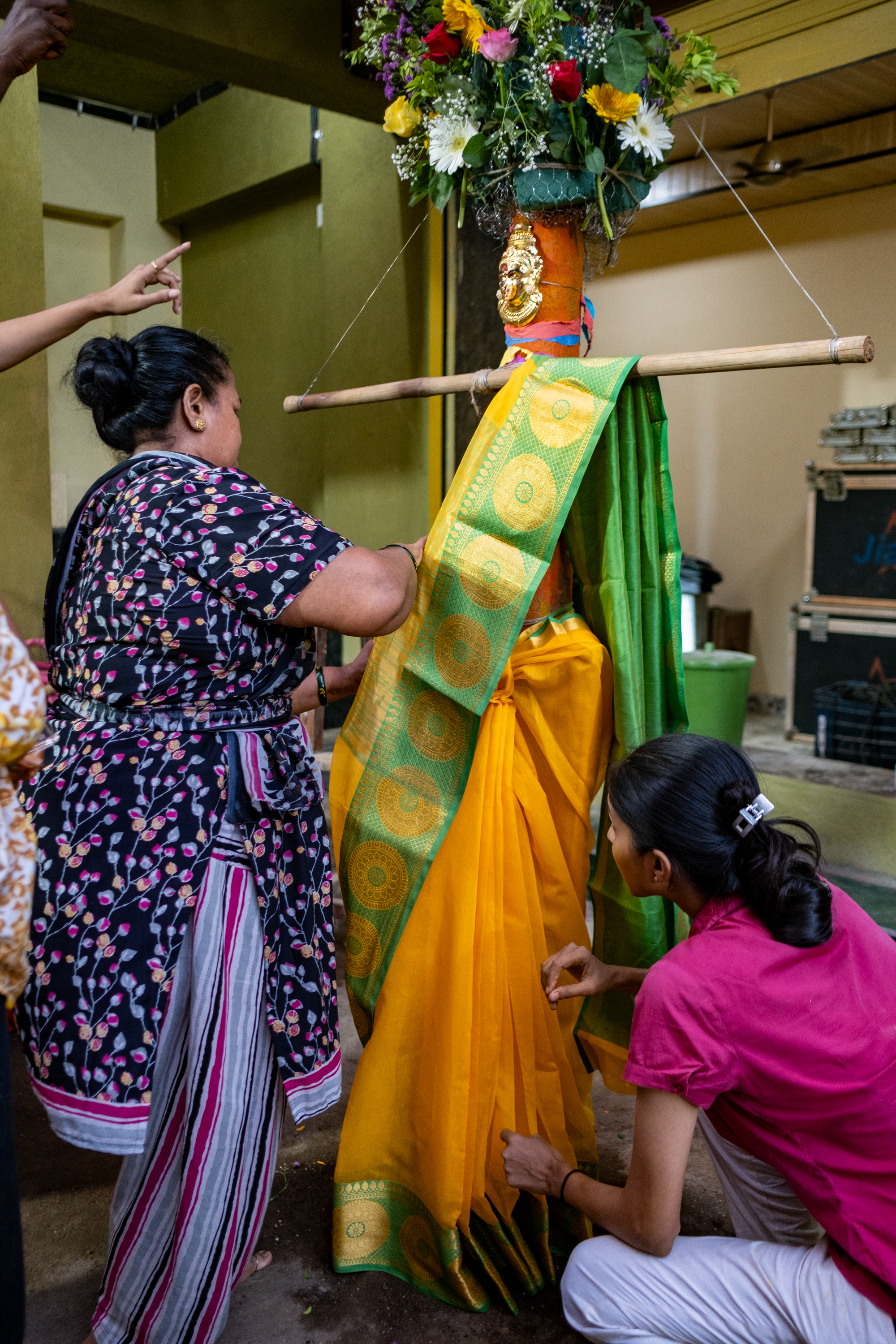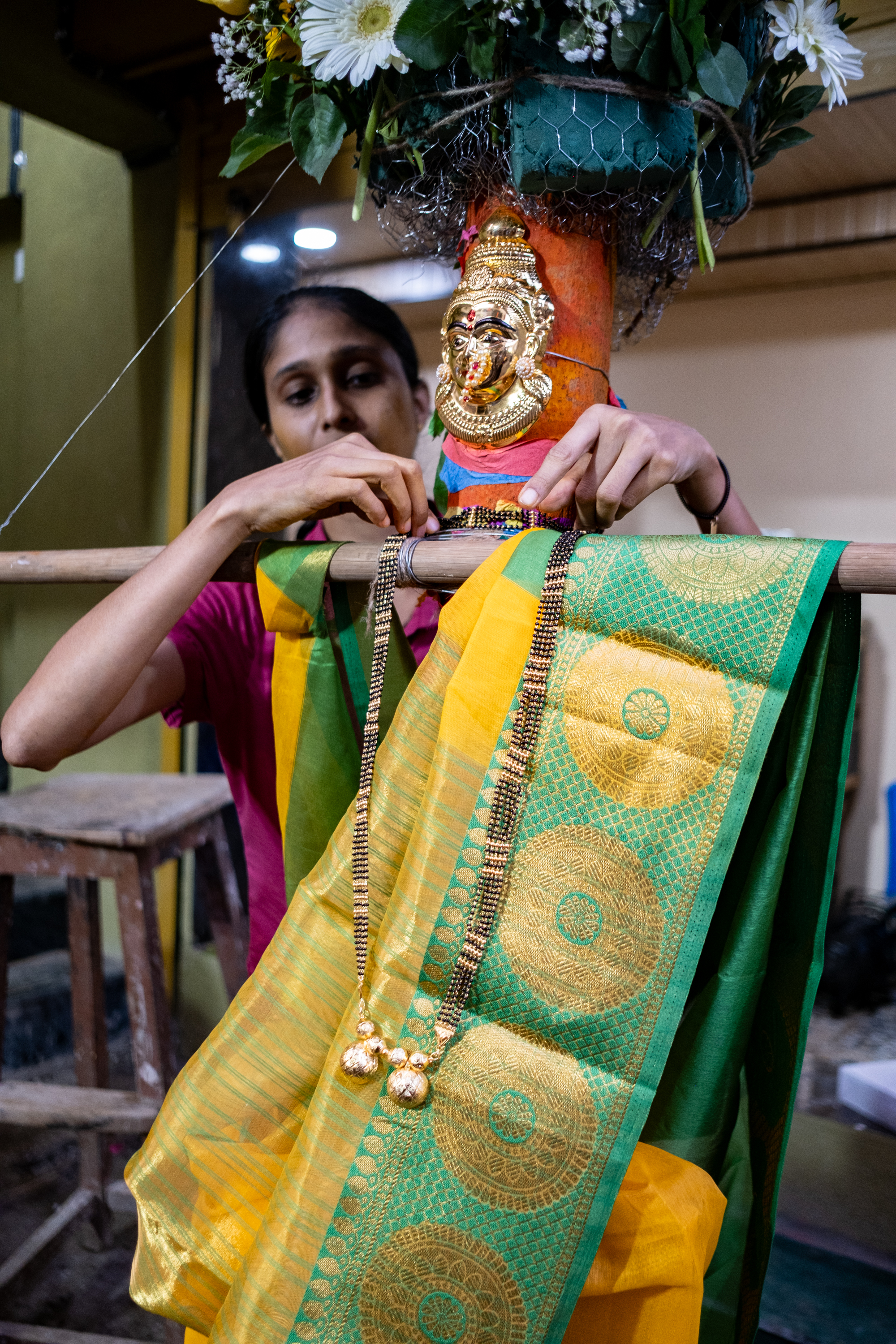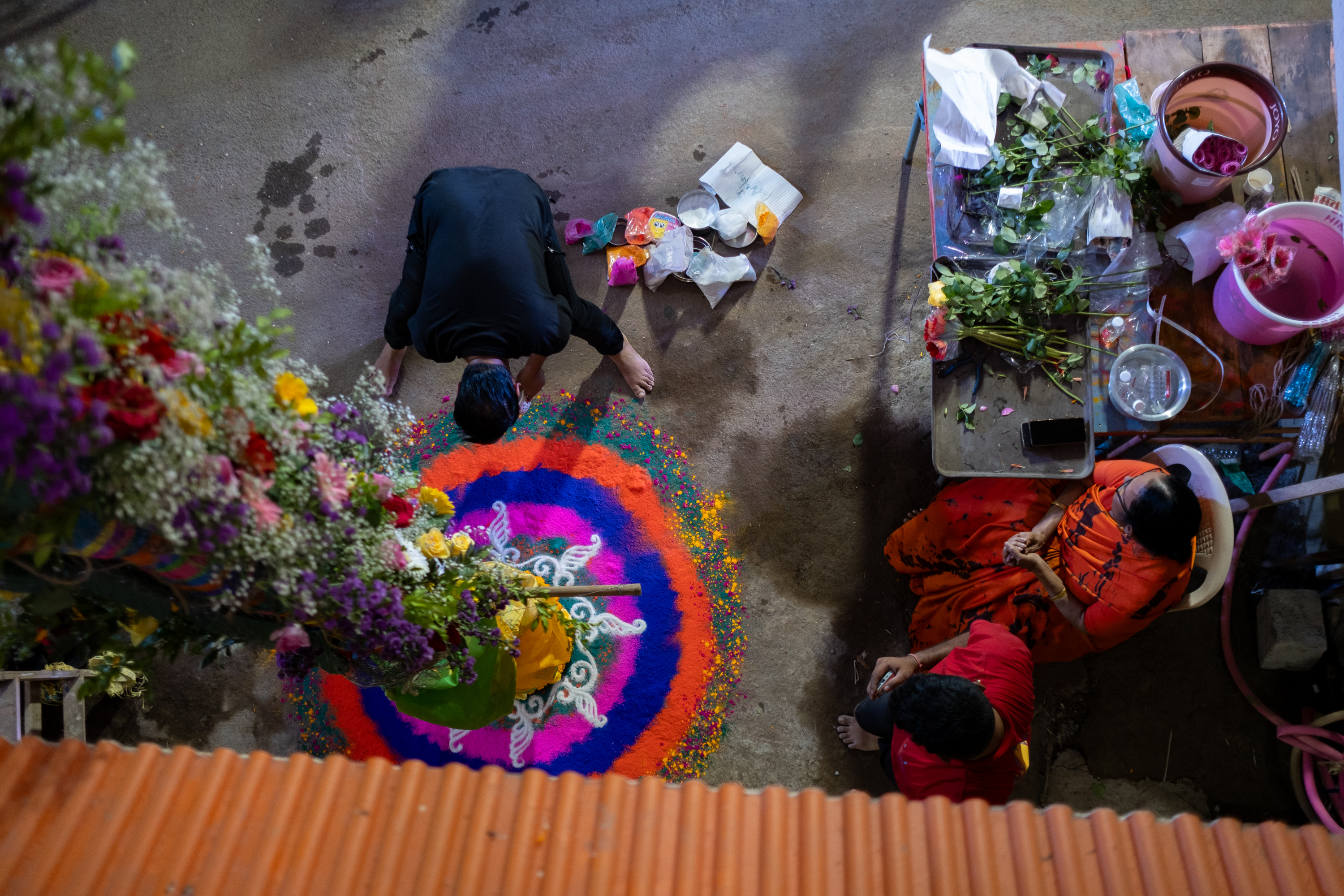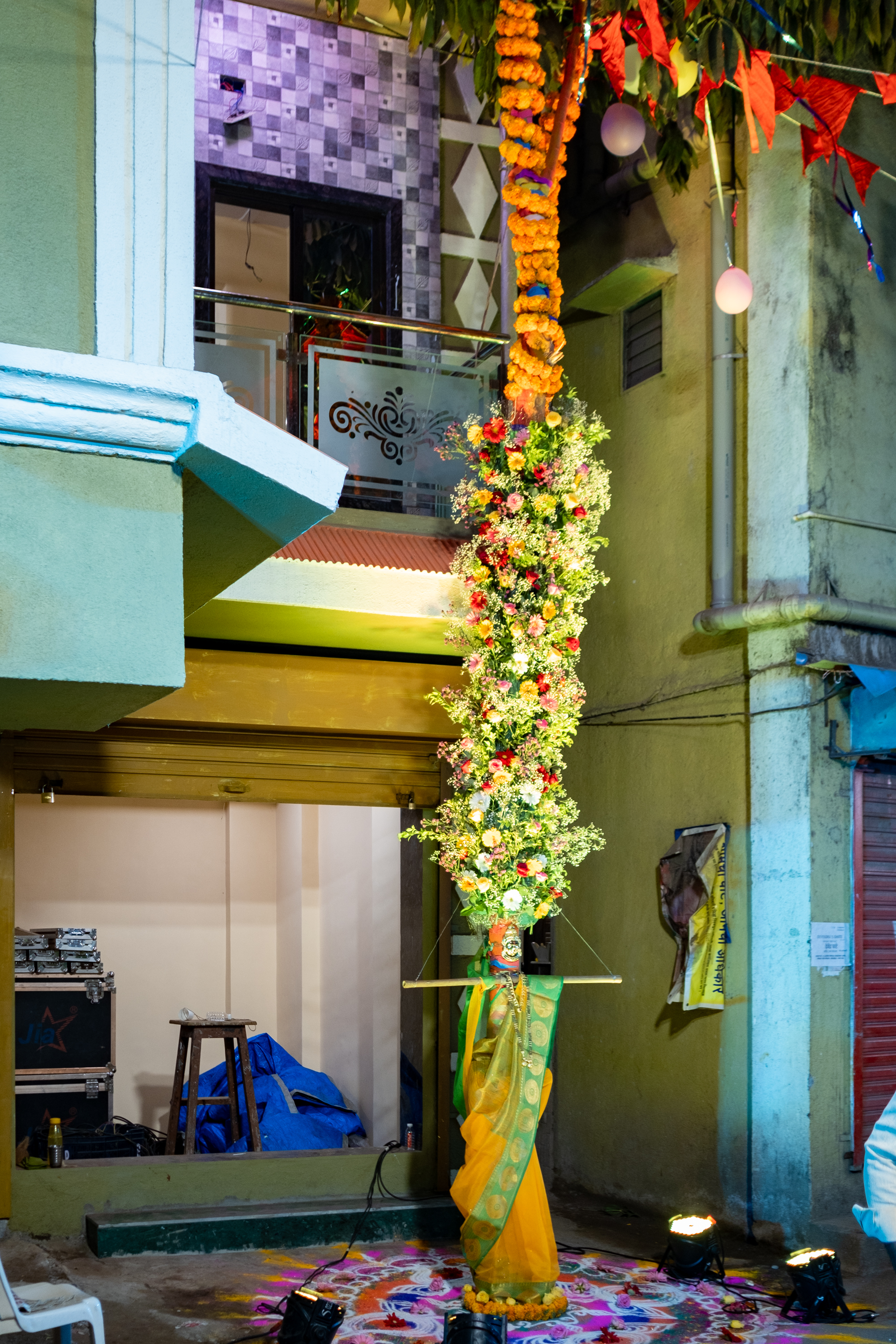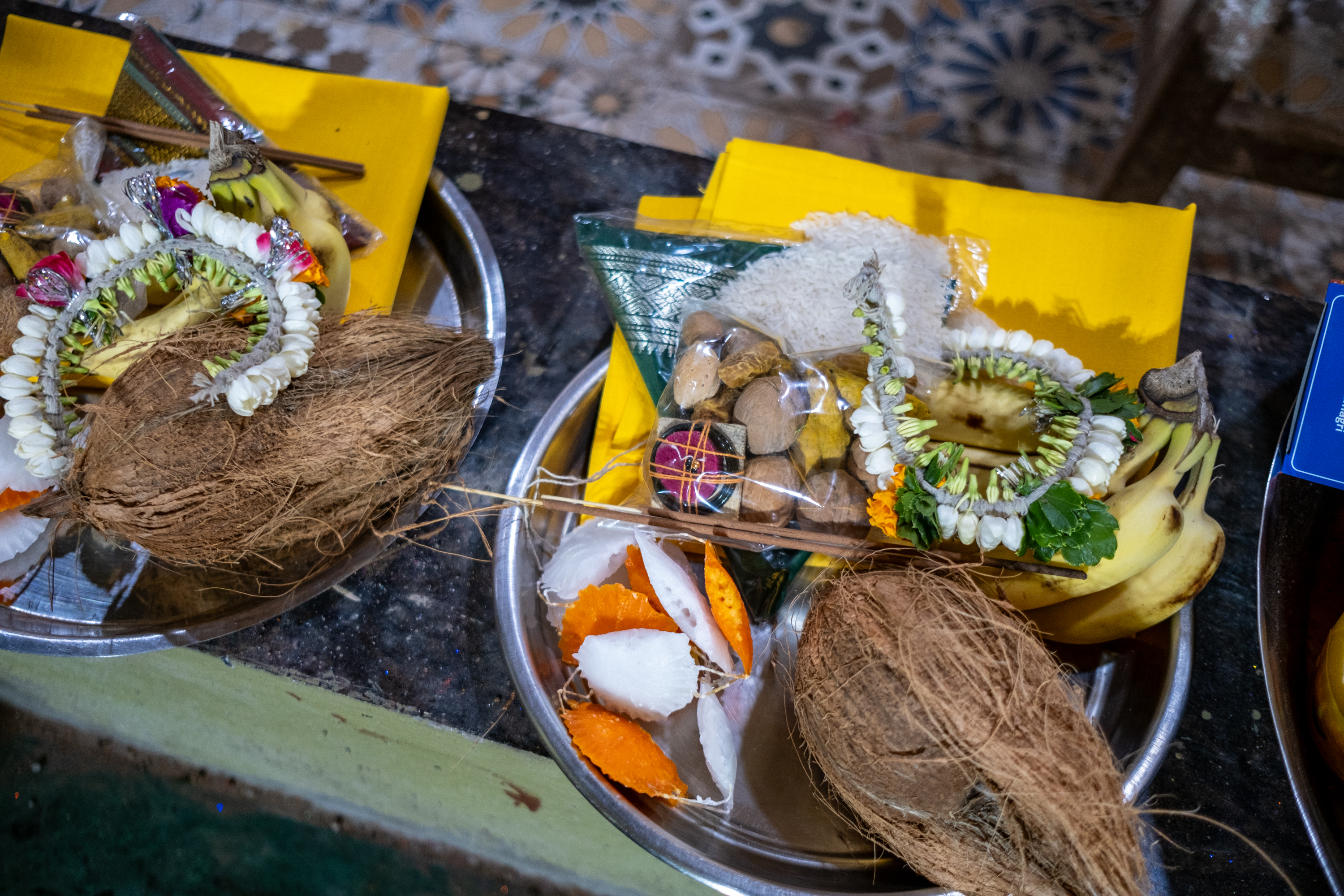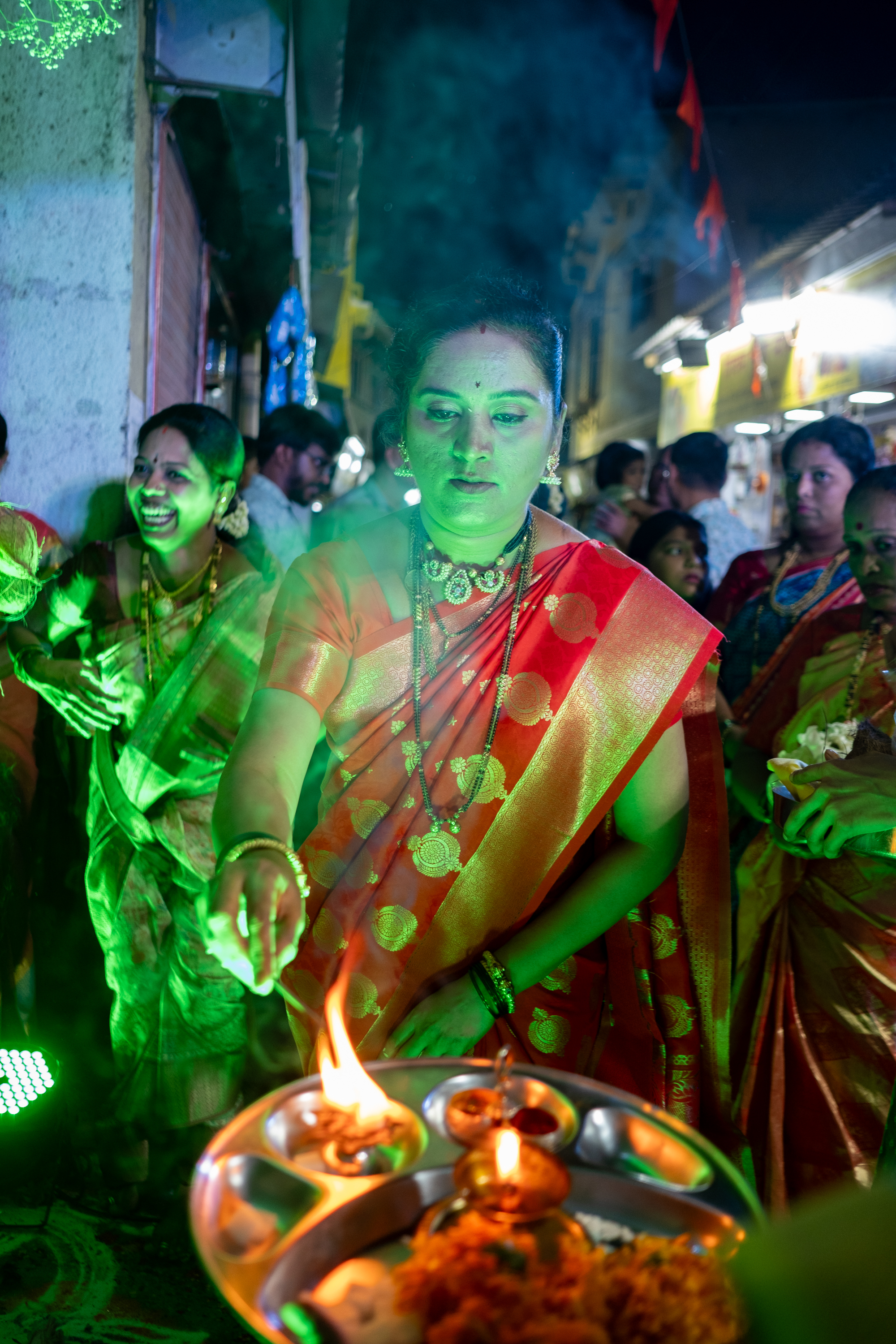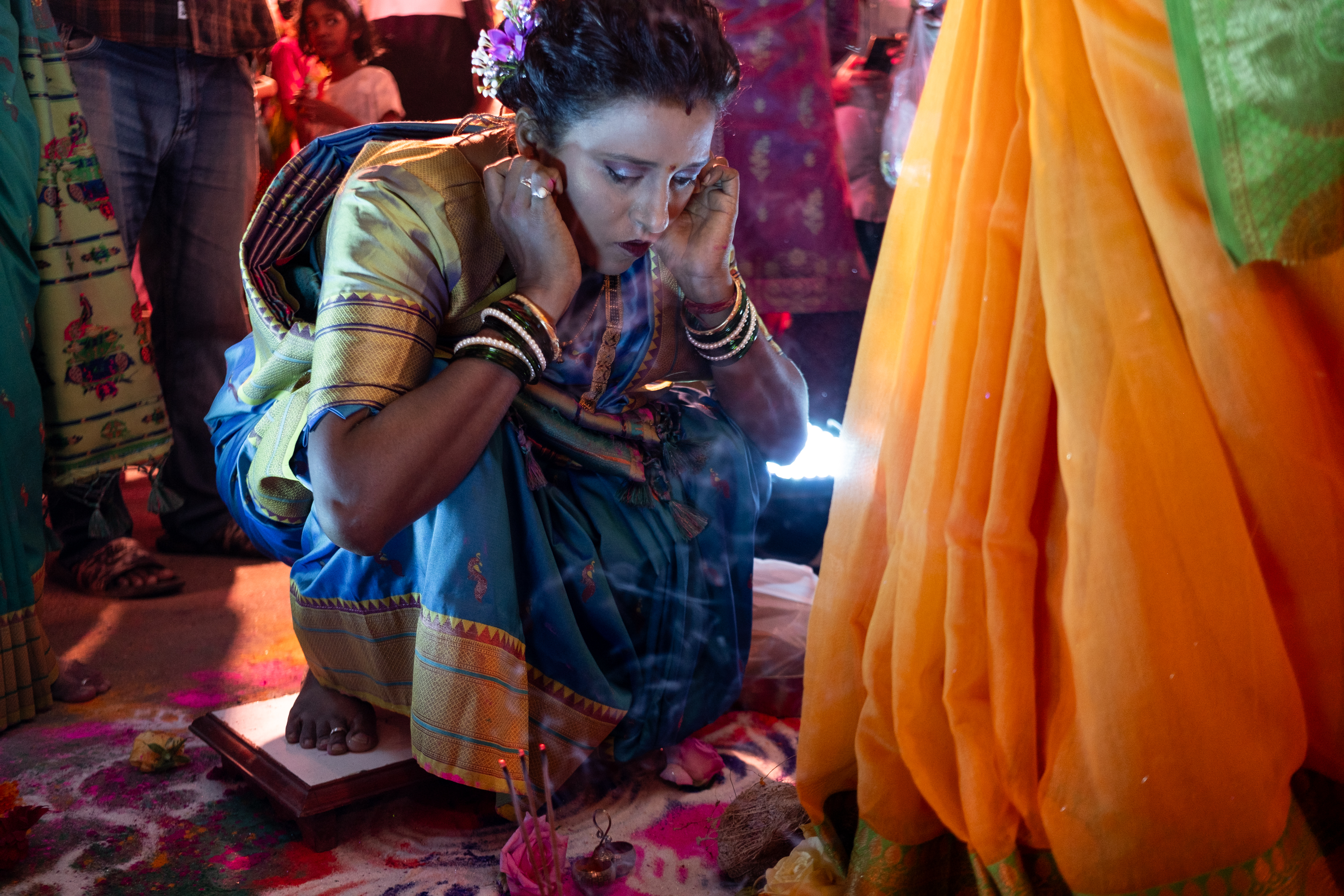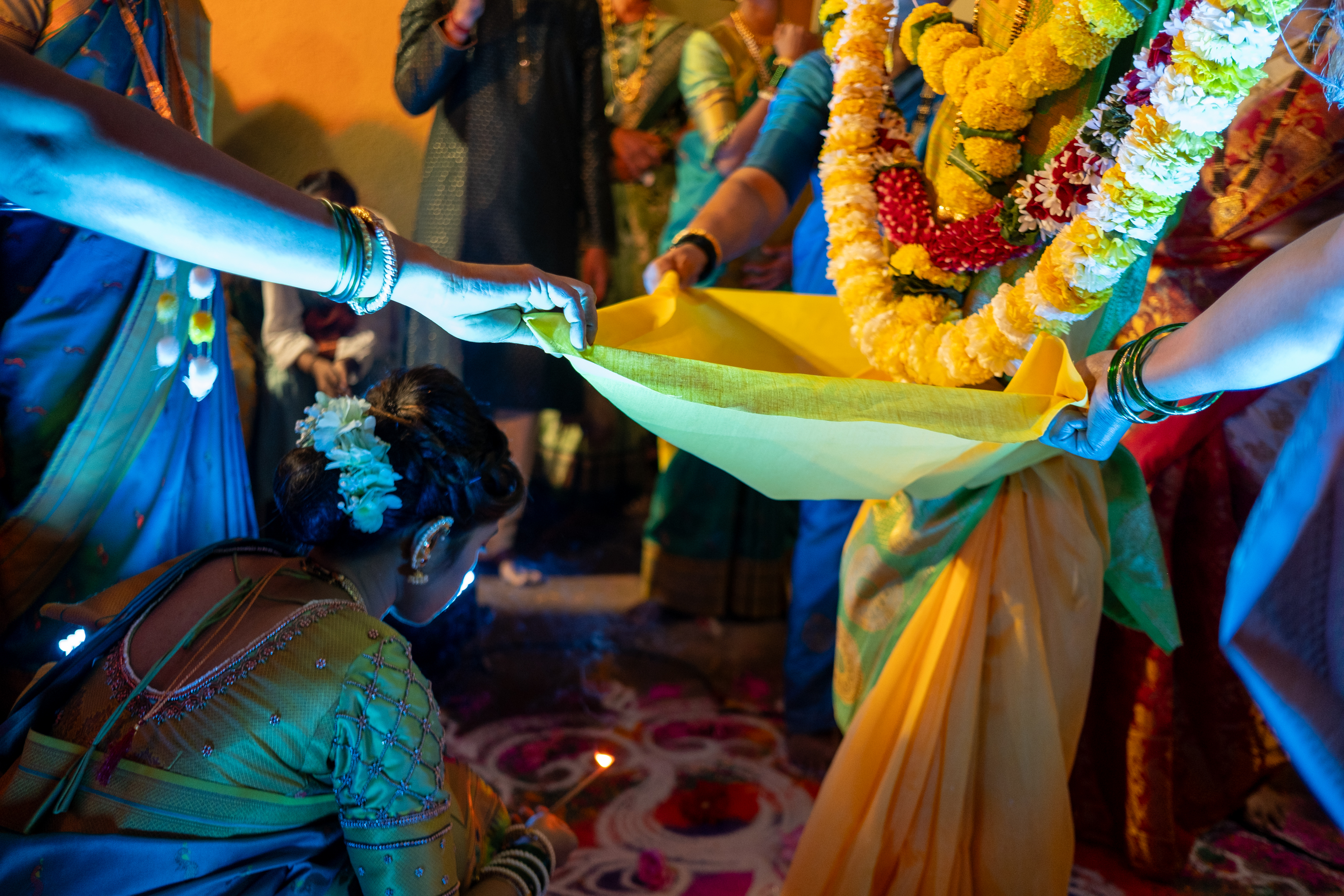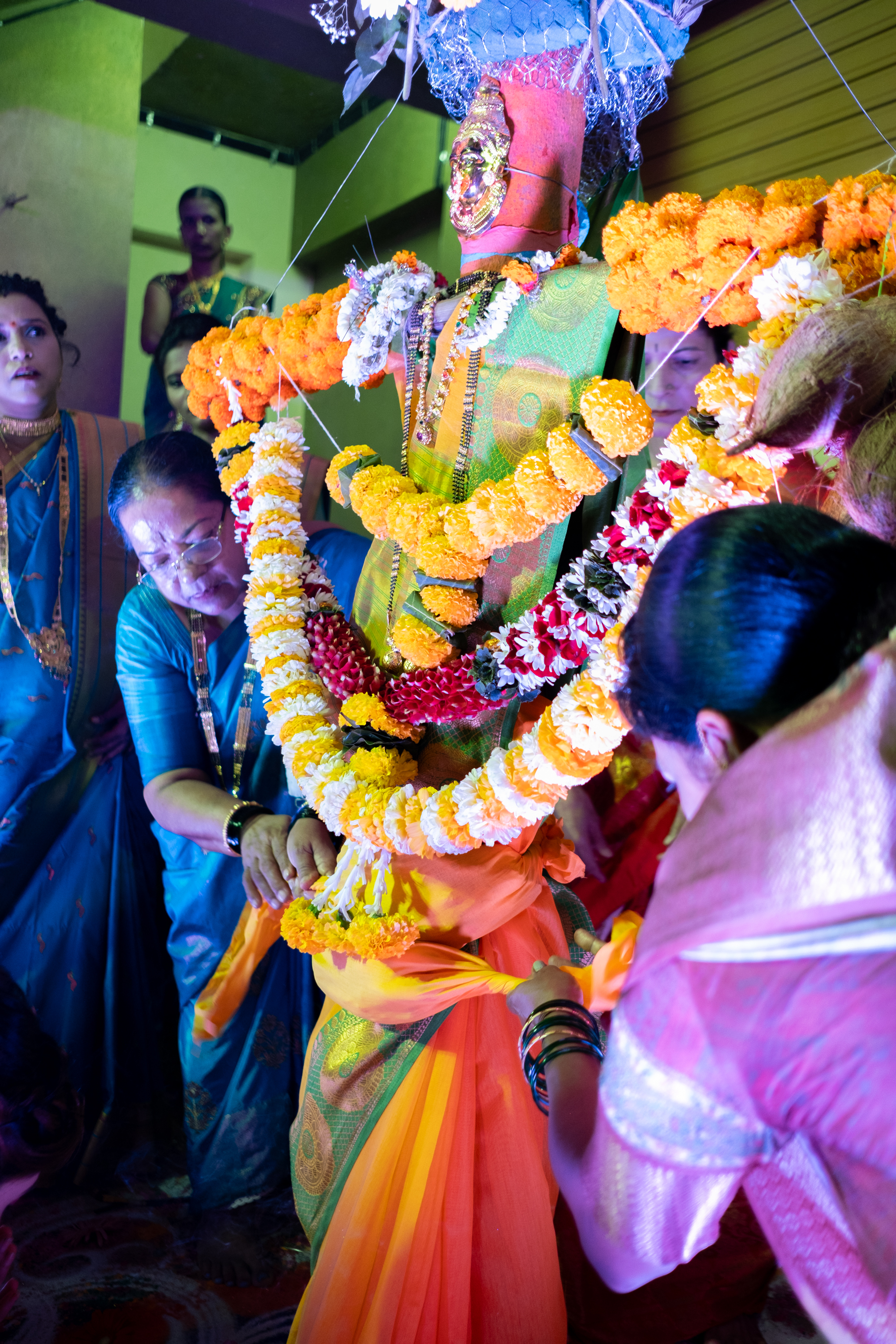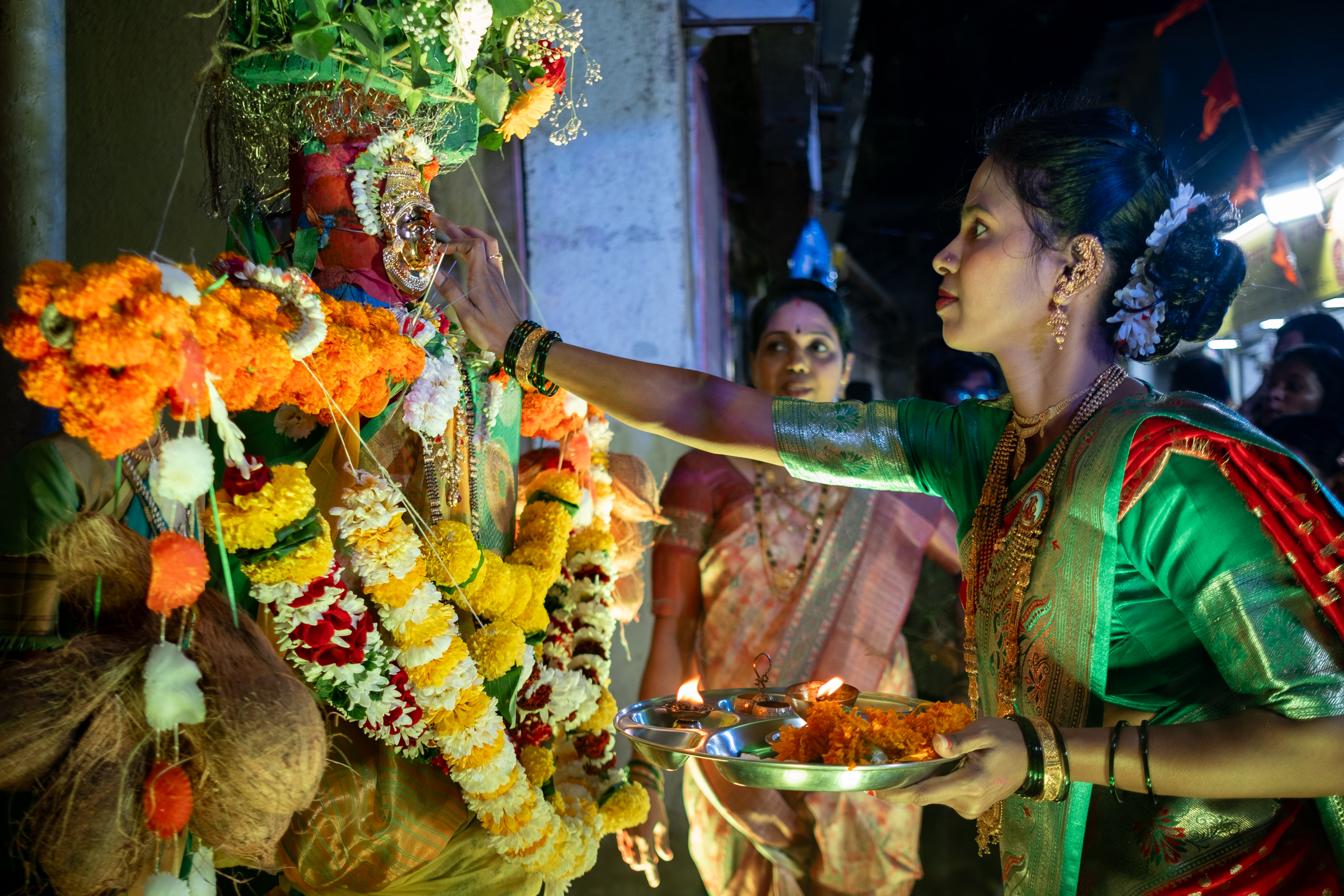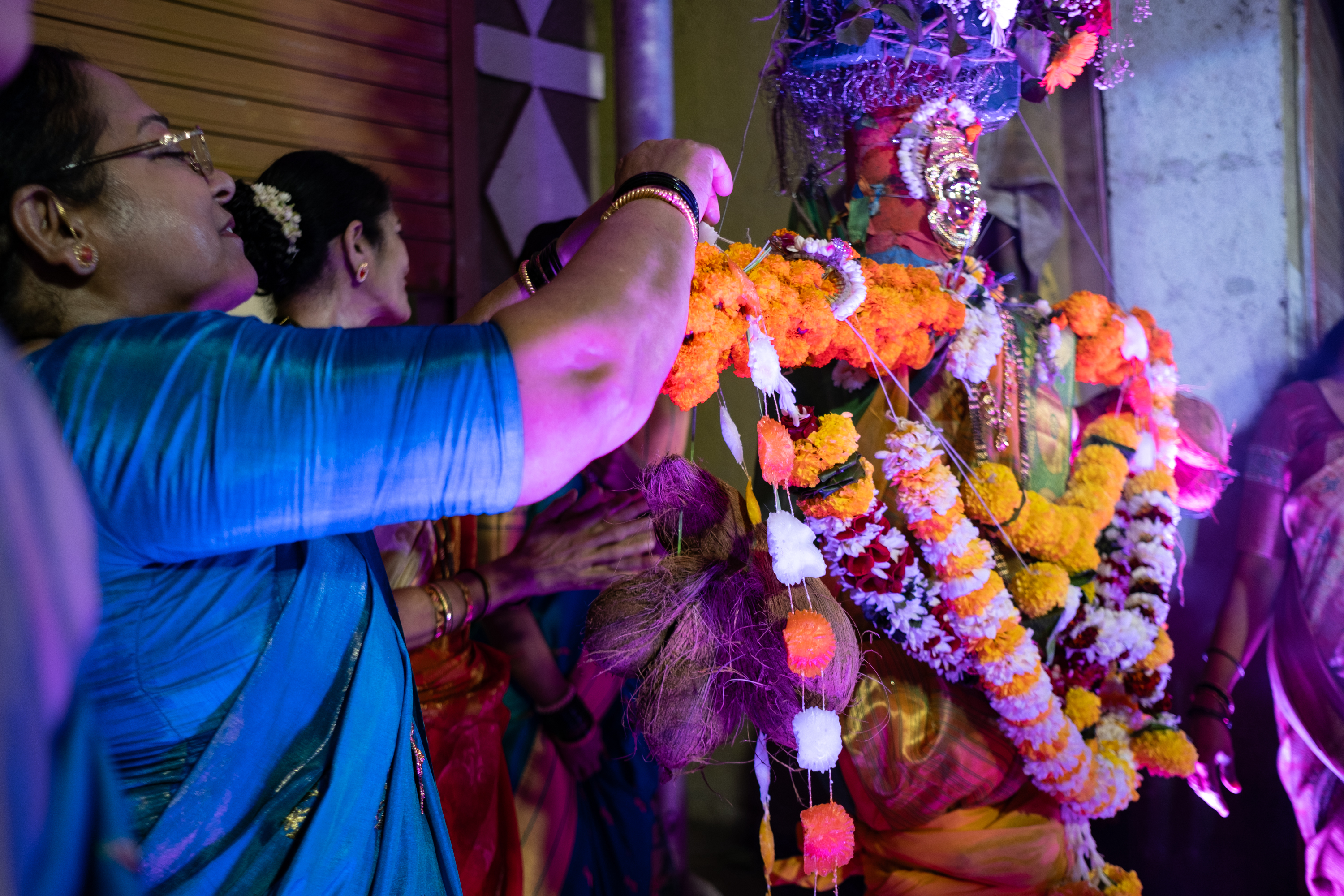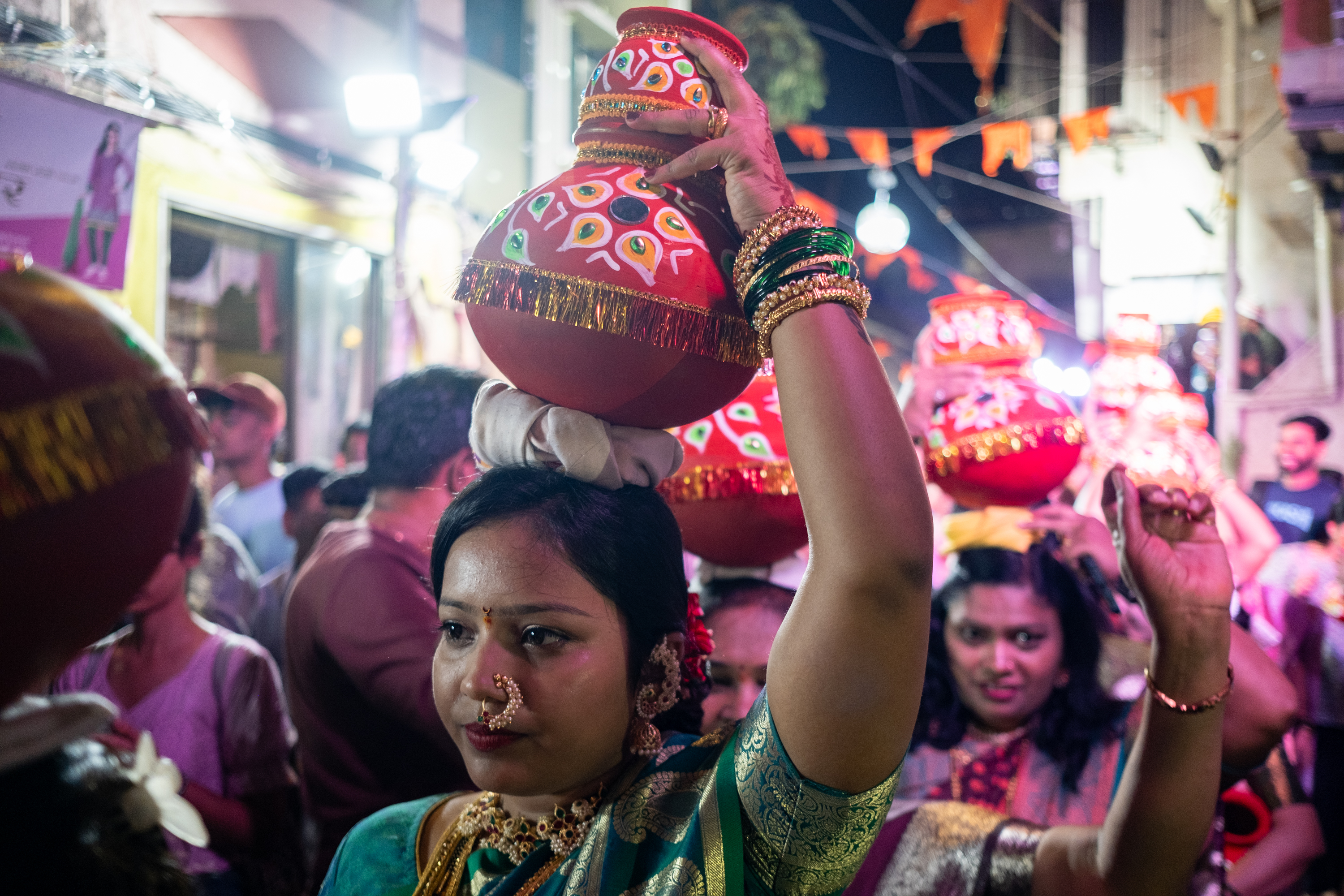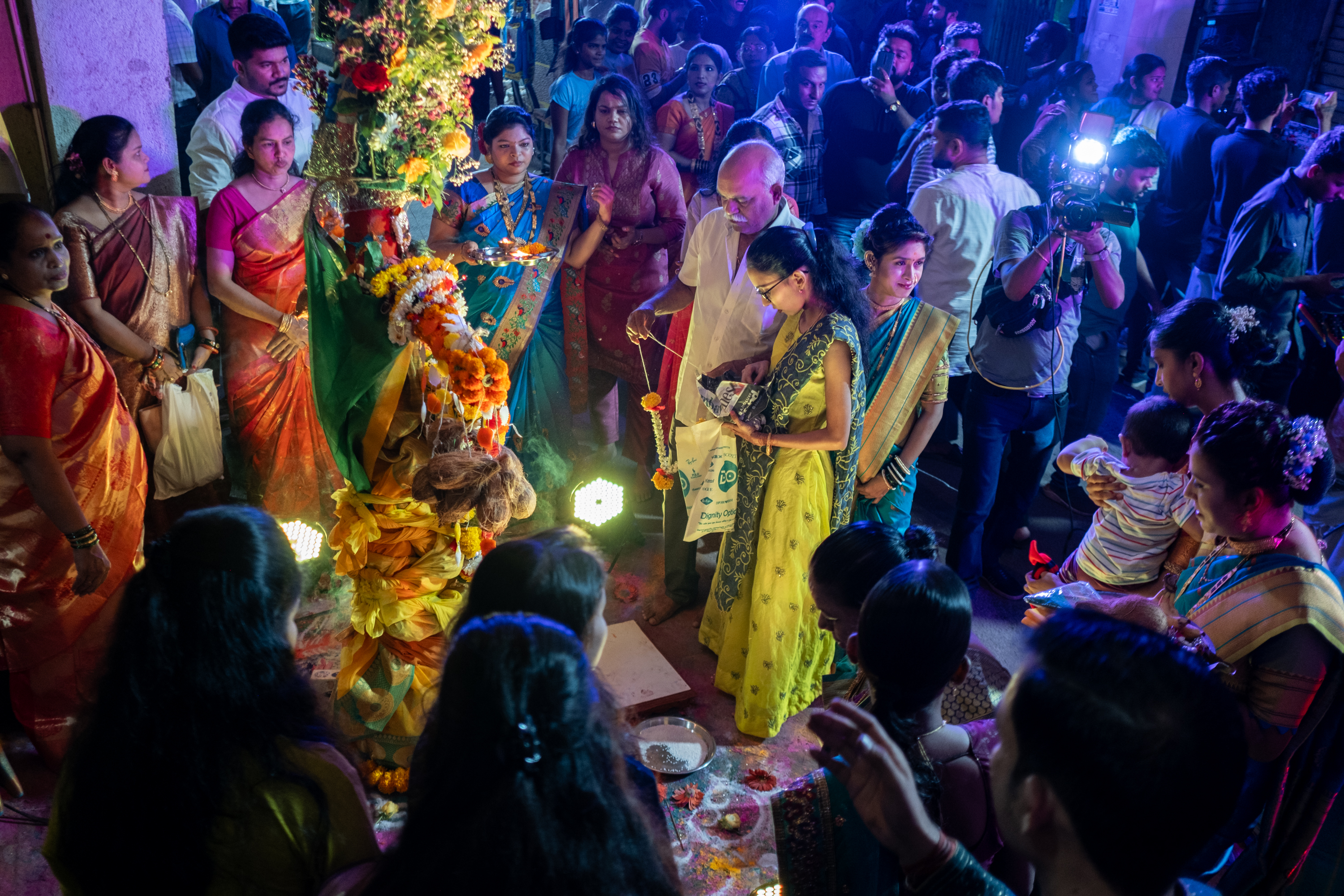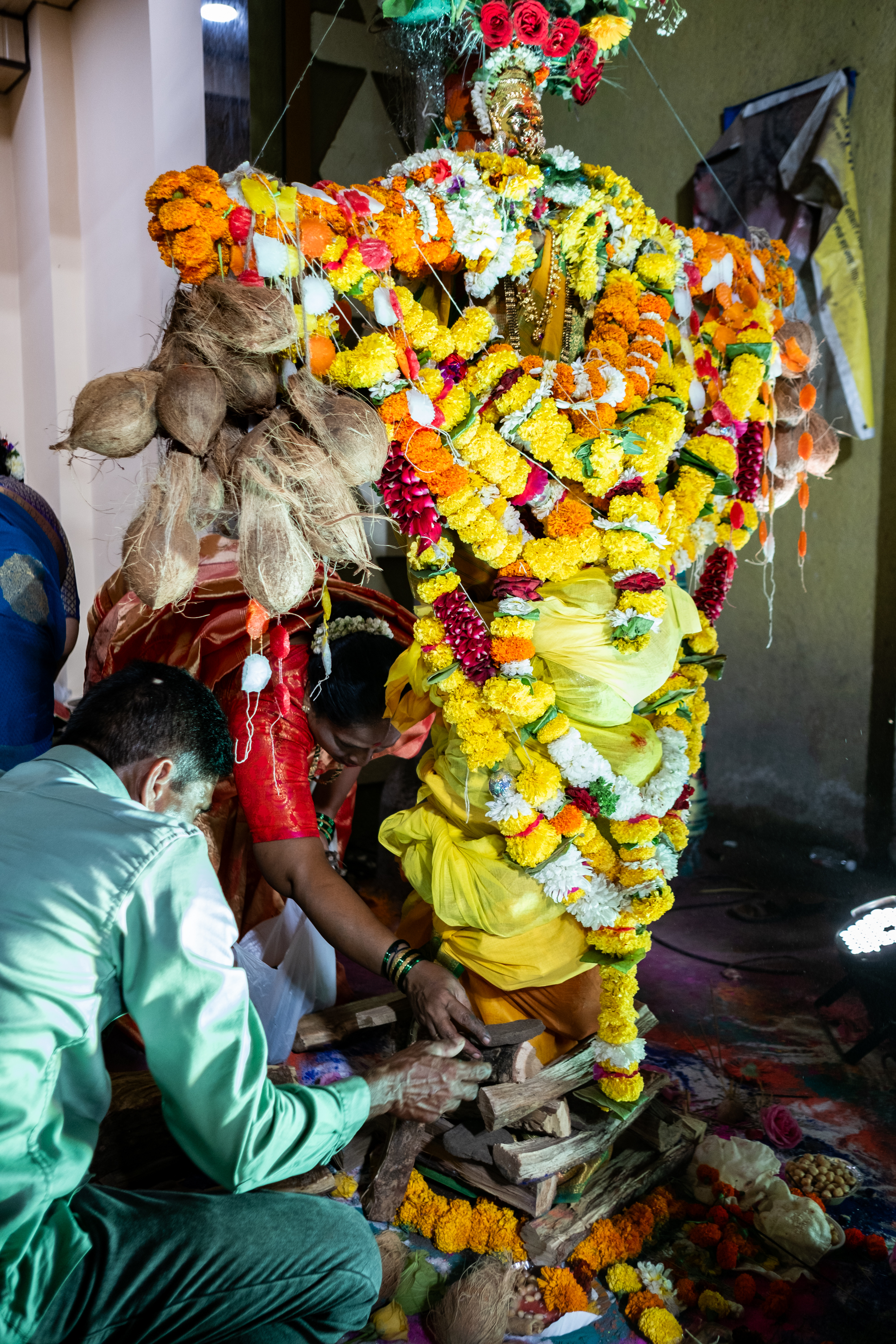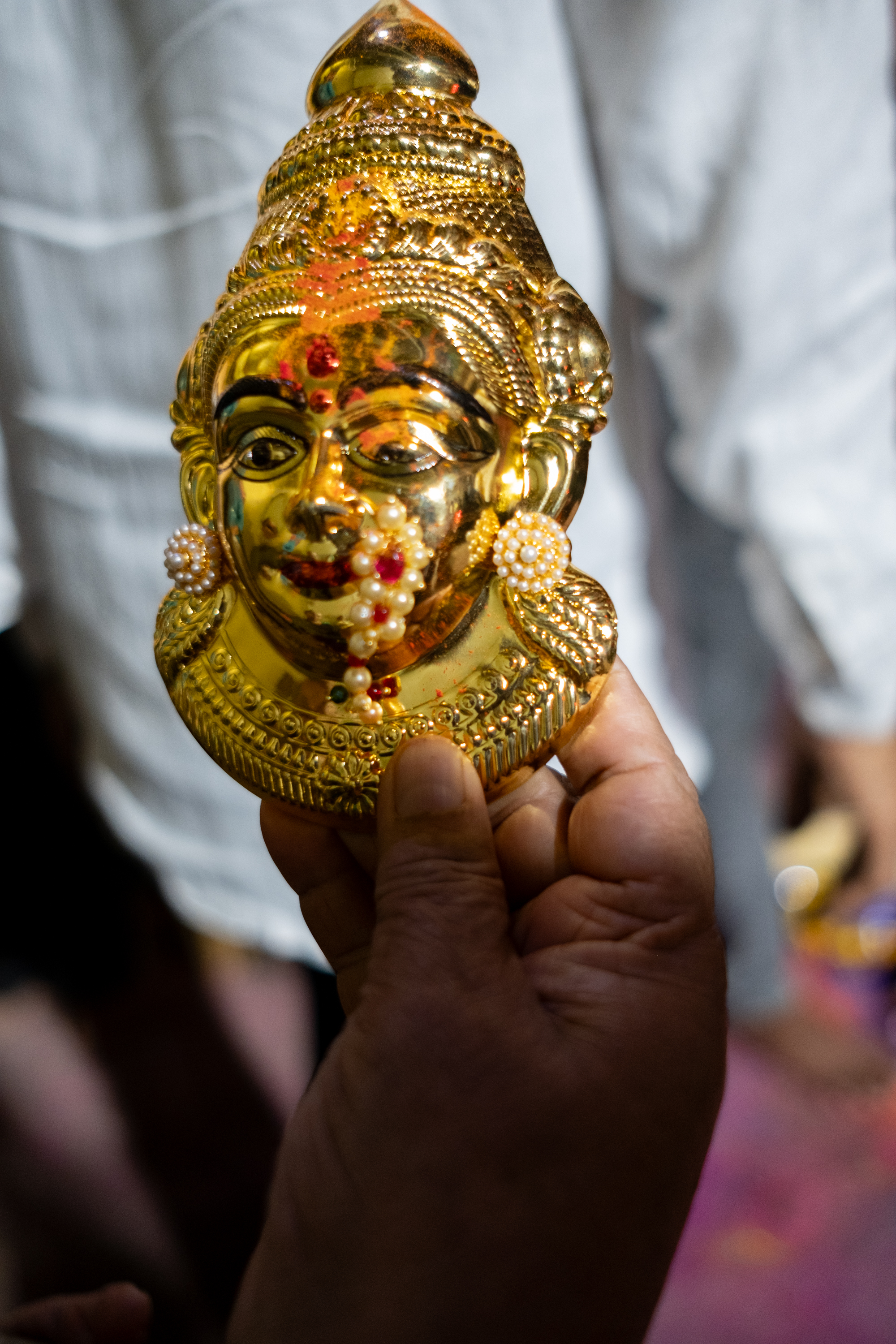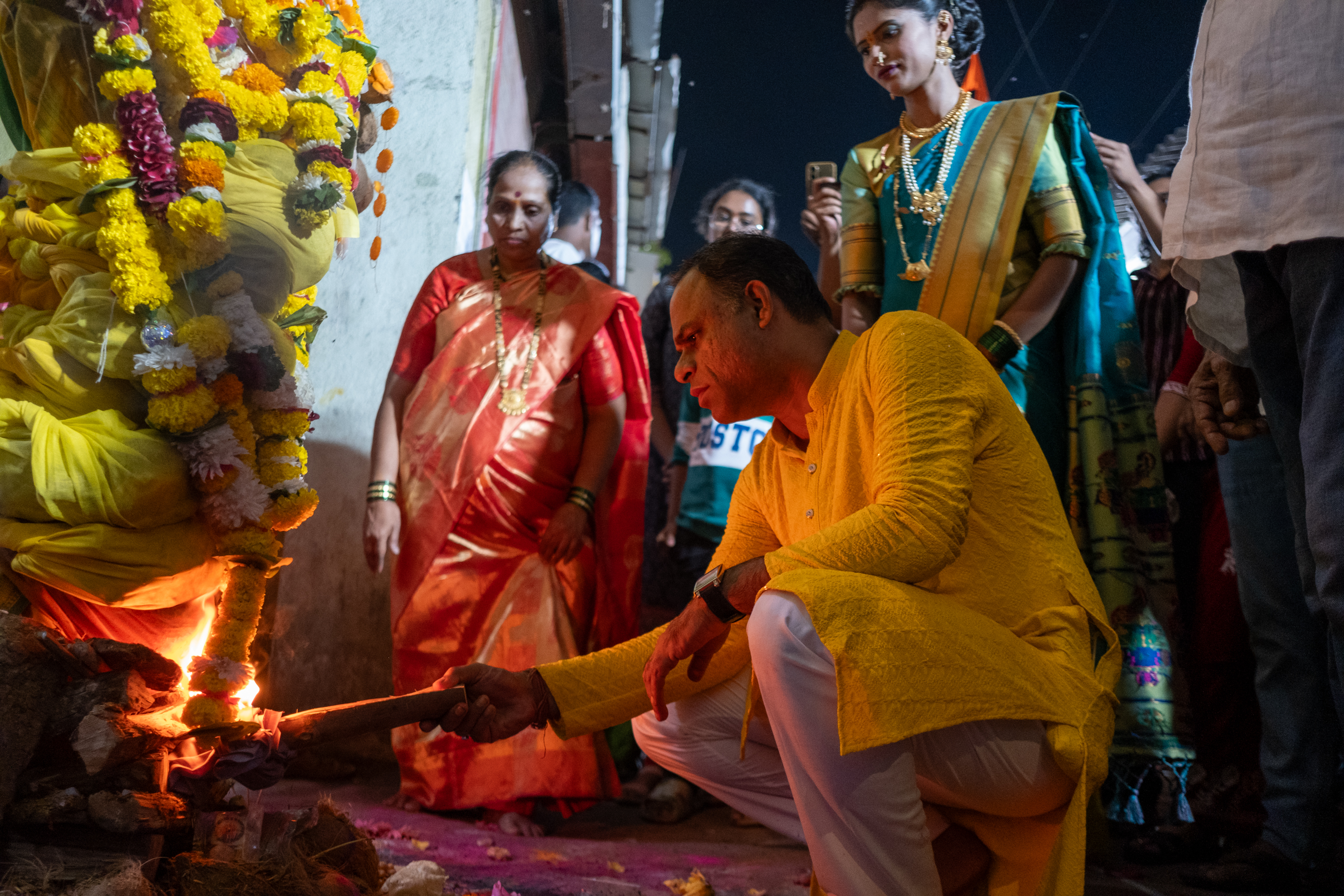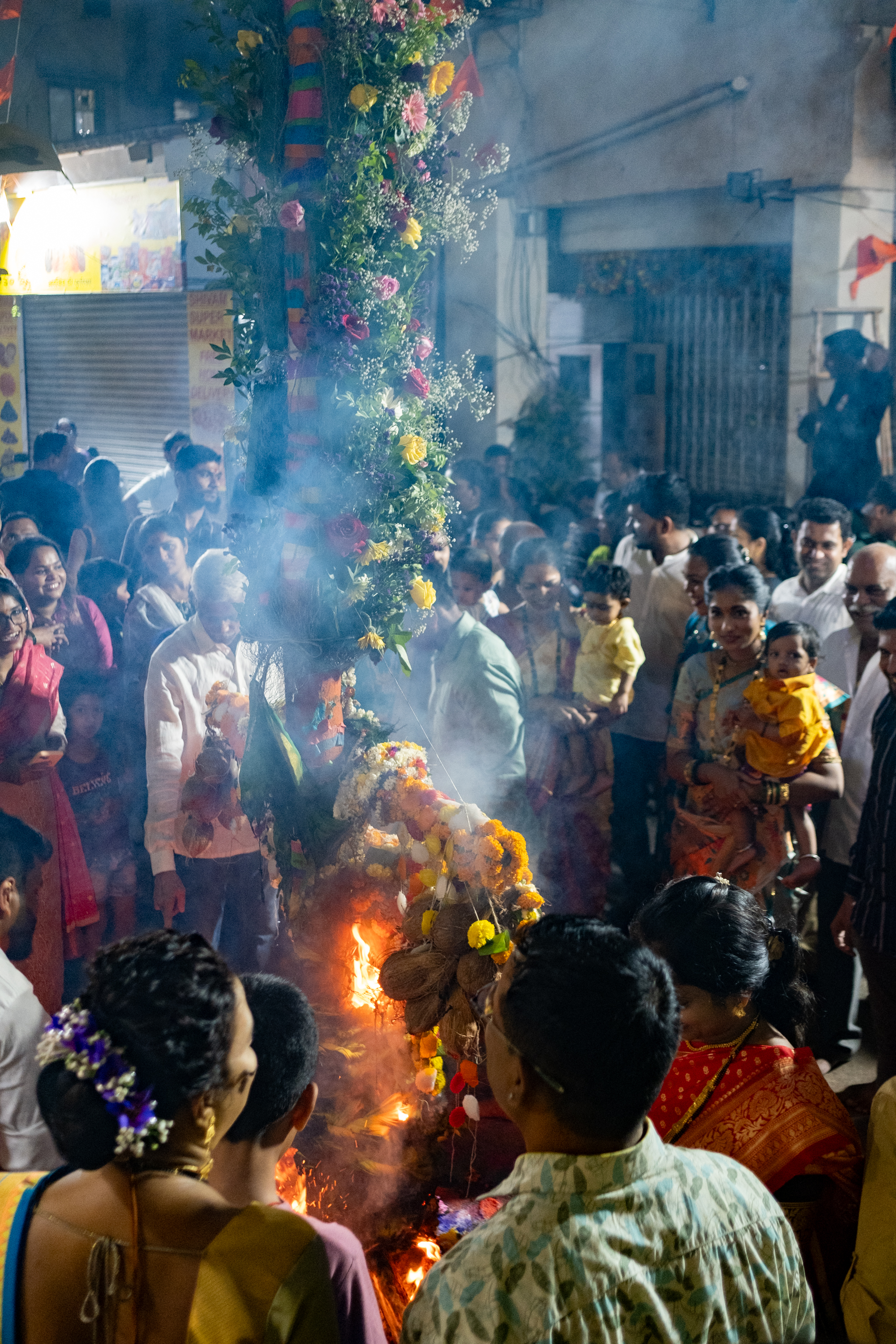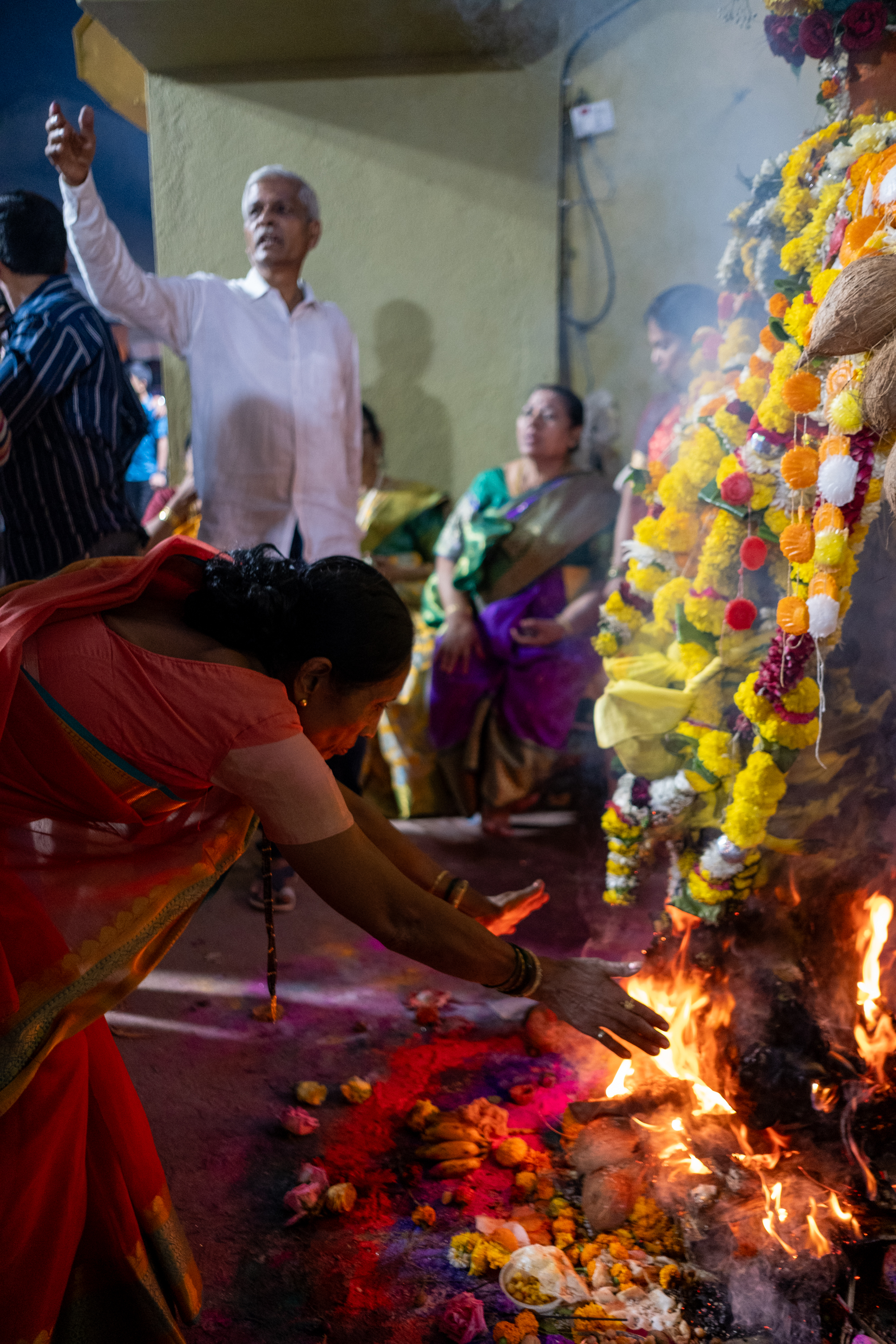Honouring Haul Mata: Holika Dahan of the Kolis
The festival of Holi falls in the month of Phalgun (according to the Hindu calendar), corresponding to March in the Gregorian calendar. March ushers in spring, a season for new beginnings and rebirth. For agrarian communities, it is time to harvest the rabi crop (sown in winter) and start the new sowing season. In the Braj region, Holi symbolizes the divine love between Radha and Sri Krishna. On Holi, people smear each other with gulal (coloured powder) and spray coloured water using water guns and balloons, emulating the manner in which Sri Krishna played Holi with Radha and the gopis (milkmaids) of Vrindavan. Koli communities start preparations on amavasya (new moon day) after Maha Shivaratri, leading up to phalgun Purnima (the 15th day of the lunar month, marked by the full moon), the day of Holi.
Holi is named after Holika, sister of Hiranyakashipu, a powerful asura (demigod opposed to the Devas) who sought to be invincible. The Puranas claim that Lord Vishnu's Varaha avatar (incarnation) killed Hiranyaksha, Hiranyakashipu's younger brother. Angered by his brother’s killing, Hiranyakashipu sought revenge against Vishnu and set off to conquer trailokya (the three worlds, i.e., swarga, Naraka, and patala). He performed tapas (austere meditation) to propitiate Lord Brahma, from whom he received a boon that made him immune to death by any man or beast, during the day or at night, inside or outside, on the ground or in the sky, or by any weapon.
In contrast, Hiranyakashipu’s son Prahlad had unwavering bhakti (devotion) for Lord Vishnu, which infuriated Hiranyakashipu. Lord Vishnu's grace miraculously saved Prahlad each time he subjected him to numerous tortures and attempts on his life. Hiranyakashipu then enlisted Holika, who possessed a boon rendering her immune to fire, to sit on a burning pyre with Prahlad on her lap, expecting Prahlad to perish in the flames while Holika remained unharmed. However, her evil intentions caused Holika to burn to ashes, while Prahlad emerged unscathed from the flames. Hiranyakashipu was ultimately slain by the ferocious man-lion avatar of Lord Vishnu, Narasimha or Narsingh, who disemboweled him at twilight by placing him on his lap, thus bypassing the boon he had received from Brahma. Holika dahan commemorates the burning of Holika, symbolising the victory of good over evil.
The Koli traditions incorporate certain rituals and practices that are unique to their culture. For instance, Kolis celebrate the Holika dahan on trayodashi tithi, the 13th day of the lunar month in the Hindu calendar, two nights before phalgun purnima, a departure from the national tradition of one night prior. This advance celebration apparently began during the British period, when authorities imposed restrictions on public festival celebrations. To avoid detection, Kolis advanced the festival by a day, and the tradition has continued ever since.
Despite Holika's antagonistic role in Prahlada's story, Kolis reveres her as a Mother Goddess, affectionately referring to her as Haul Mata (mother). Kolis erected her effigy in the form of a tree trunk, usually cut from a supari (betelnut palm) or mango tree. A Koli neighbourhood installs several effigies, each uniquely decorated by the family or committee hosting it. Her arrival is a joyous occasion, and the trunk is smeared with haldi (yellow turmeric); in the same way, a bride is smeared with turmeric during haldi chadavane (haldi ceremony) before a Koli wedding. At the base of the trunk, people nail coins as a symbol of good luck. Cow dung and holy water purify the ground where the trunk stands. Rangoli (decorative art) is made using coloured powder and flowers. The goddess is manifested by a gold facemask attached to the tree trunk, which is the deity's body. A horizontal pole attached to the tree trunk serves as the goddess's extended arms. Devotees venerate this arrangement, which gives the deity an anthropomorphic form.
In Hinduism, the divine Mother Goddess manifests herself in various forms, representing shakti (universal creative force). Only married women, known as suvasini (a woman whose husband is alive), can perform Holika's rituals, not widows or unmarried girls. Married women in the family perform the oti bharan (gifting the womb) ritual, which is an offering of a fresh harvest. Before starting the ritual, the women bathe and put on a new Nauvari saree (a nine-yard saree worn by Koli women). Four ladies hold the ends of a piece of cloth, symbolic of oti (in Marathi, oti means womb), while a fifth lady places coconuts and other offerings inside the cloth. Next, they twist, fold, and tie the cloth around the effigy's womb. A group or family donates several pieces of cloth to tie around the effigy. The women perform aarti (the ritual of waving the sacred fire in front of the deity), chant mantras, and sing koligeets (Koli folk songs), praising the Goddess and her virtues.
Women adorn Holika with visual markers that reflect their marital status. The effigy holds items of solah shringar, a collection of sixteen pieces of jewellery and accessories that complete the traditional look of a Hindu bride. The bridal items include the mangalsutra, a new Nauvari saree, and glass bangles. They apply a bindi (a dot of red vermillion) and sindoor (a line of red vermillion) to the effigy to signify her marital status. Additionally, a special ritual known as veni bharan involves placing a floral veni on the effigy to complete her bridal look. Stringing fresh flowers like jasmine, roses, and marigolds into a circular or crescent-shaped garland creates a veni, a hair accessory.
During the festival, Koli families cook only sattvic food (natural or pure essence) in the house, without onion and garlic. Sattvic food can also include sweets, fresh fruits, jaggery, honey, and dairy products. Women prepare naivedya (sattvic food offered to the deity) and offer it to the Goddess for her blessings, which is then distributed as prasad (blessed food). During Holi, women prepare special sweet items like puran poli (traditional Indian sweet flatbread) and offer them as part of the naivedya.
As midnight approaches, people remove their facemasks and stack logs of wood and cow dung cakes around the effigy, readying it for the bonfire. A newlywed couple, usually a family member, circles the effigy seven times and sprinkles holy water around it, similar to the saptapadi (seven steps) wedding ritual. Women also participate in a procession, carrying earthen pots on their heads. They circle the effigy five times and break the pots in the fire. The earthen pots used to carry the ceremonial fire are remnants of a long-standing tradition. The local priest or astrologer usually determines the auspicious time, and a senior member of the family typically lights the bonfire. In the past, the patil (village headman) took on the task of lighting the fire when there was only one bonfire in the entire village.
People from all over Mumbai come to seek Holika’s blessings and join in the celebrations, dancing all night. The rhythmic Koli dance, with its lively music, injects energy into the festivities. People pray to Haul Mata, asking her to forgive past misfortunes and welcome new beginnings, as rising flames engulf the effigy. The smoke rising from the burning effigy is believed to remove negative forces from the neighbourhood. The household scatters the ash after the fire burns out to dispel negative energies. Koli fishermen smear the ash on their fishing boats and scatter it at sea, believing it keeps the boats safe and ensures a bountiful catch during the fishing season.
Holika dahan symbolises the victory of good over evil, faith over ignorance, and devotion over arrogance. It serves as a reminder of the power of dharma (righteousness) when confronted with severe adversity. For the Koli community, Holi is not just a religious observance but a celebration of their cultural heritage and communal spirit. Kolis add a unique flavor to the rituals, adjusting them to suit regional sensibilities while retaining the festival's broader pan-India essence.
People usually cut a tree trunk from a supari (betel nut palm) or mango tree to erect the effigy of Holika.
Days before the festival, communities gather wood and combustible materials for the bonfire.
Rangoli (decorative art) and flowers adorn homes and community spaces.
The trunk is smeared with haldi (turmeric), similar to how a prospective bride is smeared with turmeric during the haldi chadavane (haldi ceremony) before a Koli wedding.
At the base of the tree trunk, people hammer coins to symbolize good luck.
Because Holika is associated with fertility, marriage, and birth, people treat her like a new bride. Consequently, Holika undergoes all the rituals performed for the bride in a Koli wedding.
The ground where the tree trunk is installed is purified using cow dung and holy water. The tree trunk is erected by placing it in a hole dug in the ground and secured into position using ropes.
Due to tree cutting restrictions, the tree trunk used for Holika dahan is grown in the home's courtyard. After the festival, they replant the unburnt tree's branches as saplings, a process that takes nearly five years for them to mature into full trees.
Attached to the tree trunk, a facemask symbolically embodies the goddess, serving as her body. A horizontal pole extends from the trunk, representing the goddess’s arms. Devotees worship Holika because of this arrangement, which gives her an anthropomorphic form.
The hosting family or committee erects several effigies in a Koliwada, each decorated in a unique style.
The preparation of the effigy and the installation of decorations in Koliwadas bring together people from diverse backgrounds and communities, fostering a spirit of harmony and togetherness within the neighbourhood.
Holika, as a Mother Goddess, is associated with abundance and prosperity, making her presence a joyful occasion of celebration. The preparations for Holika Dahan mirror those of a wedding, with homes decorated specially to receive the new bride.
Married women in the family adorn Holika with all the visual markers of a married woman. This includes solah shringar items, which consist of 16 pieces of jewelry and accessories that complete the traditional look of a Hindu bride, placed on the effigy.
The effigy also features specific bridal items such as the mangalsutra (an auspicious thread worn as a necklace), a new Nauvari saree (a nine-yard saree worn by Koli women), and glass bangles.
Around the effigy, people create rangoli (decorative art) using colored powder and flowers.
People see the tree trunk as a manifestation of Holika, who had a boon that made her immune to fire. Holika’s brother, Hiranyakashipu, had a son named Prahlad, who had unwavering bhakti (devotion) towards Lord Vishnu. In an attempt to kill Prahlad, Hiranyakashipu instructed Holika to sit on a burning pyre with Prahlad on her lap. However, Prahlad's devotion to Lord Vishnu saved him from the flames, while Holika burned to ashes. This event symbolises the victory of good over evil and is commemorated as Holika dahan.
A special ritual known as veni bharan involves placing a floral veni on Holika’s hair to complete her bridal appearance. Stringing fresh flowers like jasmine, roses, and marigolds into a circular or crescent-shaped garland creates a veni, a hair accessory.
Because Holika is associated with fertility, marriage, and birth, only married women in the family, known as suvasini, can perform her rituals; widows or unmarried girls cannot.
Before starting any ritual, married women in the family bathe and dress in new Nauvari sarees (a nine-yard saree worn by Koli women). They then clasp their ears in a gesture of asking for forgiveness from Holika for any past transgressions.
Five married women perform the oti-bharan ritual. Four women hold the ends of a rectangular piece of cloth, symbolising the womb (oti in Marathi).
A fifth lady places coconuts and other offerings inside the cloth as offerings to the Goddess Holika, who is associated with fertility and prosperity.
After inserting all the offerings into the cloth, we twist, fold, and tie it around the effigy's womb. A group or family donates several pieces of cloth to tie around the effigy.
To signify her marital status, a bindi (red vermilion dot) and sindoor (red vermilion line) are applied to the effigy.
Koli culture makes various farm offerings to the effigy of Holika, particularly coconuts, which symbolise fertility and prosperity. Coconuts are essential to all major Koli rituals, ranging from Narali Purnima to wedding ceremonies and Holika dahan rituals.
Women take out a procession, carrying earthen pots on their heads. Before breaking the pots in the fire, they circle the effigy five times. This tradition originated when people carried ceremonial fires in earthen pots.
People from across Mumbai visit the Koliwadas to seek blessing from Holika Mata and witness the Holika dahan.
Near midnight, they arrange logs of wood and cow dung cakes around the base of the effigy to prepare for the bonfire. Camphor is also added to expedite the lighting process.
After the ceremony, the facemask is removed and stored for use in the following year’s celebrations.
The final rituals are performed by the senior member of the family. In the past, only one bonfire was kindled in the entire village, and the task of lighting the fire was assigned to the patil (village headman).
The local priest or astrologer typically determines the auspicious time to light the bonfire.
People pray to Haul Mata as the rising flames engulf the effigy, seeking forgiveness for past misgivings and invoking blessings for new beginnings. It is believed that the smoke rising from the burning effigy removes negative forces from the neighbourhood.
After the fire extinguishes, Koli fishermen collect and scatter the ash around the household to purge it of negative energies. Koli fishermen also apply the ash to their fishing boats and scatter it at sea. They believe this practice ensures the safety of their boats and brings a bountiful catch during the fishing season.
